It’s not a secret that Japan is my absolute favorite country in the world. Over the past few years, it has become almost a second home to me – I have been visiting Tokyo twice a year for the past decade. But really, does anyone need an excuse to go to Japan?
Anyway, through my frequent visits, I’ve gathered a list of my favorite things to eat in this country. This article took a long time to put together but I’m finally ready to share them with you!
- Common Food Terms in Japanese Cuisine
- The Holy Trinity ingredients of Japanese Cuisine
- Finding restaurants and reading reviews in Japan
- About Japanese Rice
- What to eat in Tokyo
- Tips for Vegetarians in Japan
Common Food Terms in Japanese Cuisine
Before we get into it, I’m going to list out some of the most common food terms you will see often in Japan. By themselves, these words do not mean anything. But when combined with each other, or paired with some other food-related words, it forms some of the most well-known dishes you’ll find across Japan.
Understanding these terms will help you know what you can expect from a menu item even when a translation is not provided. Here we go:
Cooking Methods
| Katsu (カツ or かつ) | Meat cutlet, usually deep-fried, and breaded in panko crumbs |
| Age (揚げ or あげ) | Deep fried |
| Yaki (焼き or やき) | Grilled or cooked over direct heat |
Types of Carbs
| Men (麺 or メン) | Refers to a noodle dish. Comes from the Chinese word “mian”, which means noodles. |
| Soba (そば or 蕎麦) | Buckwheat. Usually refers to soba noodles which are made from buckwheat flour |
| Don (丼 or どん) | Rice Bowl |
Types of Protein
| Gyu (牛 or ぎゅ) | Beef |
| Tori (鳥 or とり) | Chicken |
| Buta (豚 or とん) | Pork |
| Ton (豚 or とん) | Pork |
For example – Gyudon means beef rice bowl, Tonkatsu means deep-fried and breaded pork cutlet, Butadon means pork rice bowl, and so on. Another example would be the word “men“. When you see a menu item that ends in “-men” – such as Tsukemen, Somen, or Ramen – you can expect that it will be a type of noodle dish.
Easy, yes?
The Holy Trinity of Japanese Cuisine
Shoyu, Mirin, and Dashi – These three ingredients make up a large portion of flavors used in Japanese cuisine. Let’s get to know what you’re eating:
- Shoyu – The type of soy sauce used in Japanese cooking is usually shoyu. It is different than the soy sauce you might be familiar with. Shoyu is made with soybean and wheat, a hint sweeter and lighter than soy sauce.
- Mirin – Rice wine with low alcohol content and high sugar content. It is used to add a hint of sweetness to the dish.
- Dashi – The soup stock commonly used in Japanese cooking, usually made from bonito (fish) flakes and kombu (kelp) or shiitake mushrooms. It adds an umami flavor to the dish.
A combination of this holy trinity makes up some of the most popular Japanese dishes – teriyaki sauce, miso soup, gyudon, oyakodon, just to name a few. If you have these three ingredients in your kitchen, you’ll be able to cook many Japanese dishes at home very easily.
Finding places to eat and reading reviews in Japan
In other parts of the world, we might use Google Maps or Yelp when finding a place to eat. In Japan, a website called Tabelog is the place for it! Tabelog has the most comprehensive directory of restaurants and reviews in Japan. The site is mostly used by locals, so most reviews will be only in Japanese, but you can easily use Google Translate.
If you’re going to be looking up reviews on Tabelog, it would be important to know what the review culture in Japan is like. The way Japanese people give rating is different than the rest of the world – it turns out, the Japanese are a very strict bunch. In Japan, 3 out of 5 stars is considered a very good rating. You’ll often find a reputable and perfectly good restaurant with a 3-star rating, and you will never find a 5-star rated restaurant.
Generally, a rating of 3-star is seen as meeting expectations and perfectly good experience. 4-star means the food was beyond expectations. 5-star is a god-level life-changing experience that should be reserved for a select few restaurants in your lifetime.
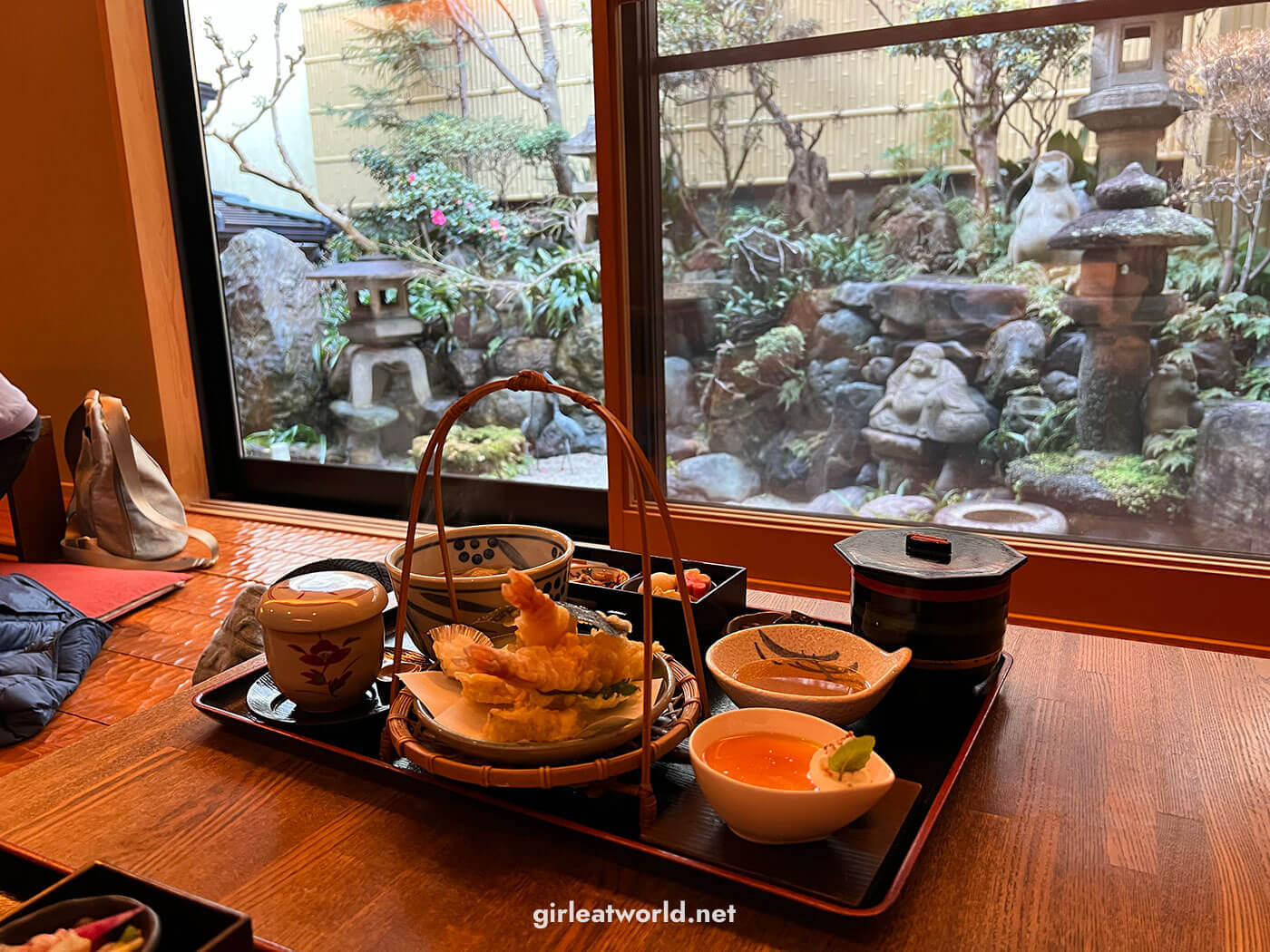
It’s still possible to use Google Maps to find places to eat when you’re in Japan, but as it is mostly used by foreigners, you’ll find that the ratings on Google Maps tend to be higher than Tabelog. That said, some locals do use Google Maps and you can still find hidden gems through it – but you’ll have to search in Japanese! For example, if you want to eat Tonkatsu, search for 豚カツ or とんかつ.
About Japanese Rice 🍚🌾
I know you’re starting to wonder – is she going to finally get to the point and tell me what I should eat in Japan? Okay okay, I’ll be quick, but I don’t think this is a section I could have skipped. Japanese people are SERIOUS about their rice.
Japanese rice is short-grain white rice. Due to the milling process used in Japan, it results in a rounder and shorter grain of rice with a chewy texture, more sticky than other varieties of white rice you’ll find elsewhere in the world. Japanese rice also have a different taste – so, the next time you eat white rice in Japan, take a moment to appreciate its taste and texture!
There are many varieties of Japanese rice, but Koshihikari is probably the most popular variety. I personally use Akitakomachi rice at home, a sub-variety of Koshihikari.
What to eat in Tokyo
And finally, here are some of my must-eat dishes whenever I’m in Tokyo and where you can find them!
Please remember that this is not an exhaustive list of what to eat in Japan. Within Japan itself, there will be dishes that are popular in certain regions and cities. I am only listing Japanese dishes that are popular and can be commonly found no matter where you are in Japan.
Tokyo Travel Guide: If this is your first time visiting Tokyo, please read my Tokyo Guide for First-timers post for useful tips and tricks!
Here is a list of what you must try whenever you’re in Japan:
- Ramen 🍜
- Tsukemen
- Soba Noodles
- Sushi and Sashimi 🍣
- Tonkatsu
- Gyukatsu
- Oyakodon
- Gyudon
- Okonomiyaki & Monjayaki
- Takoyaki
- Kushiyaki and Yakitori
- Kushikatsu
- Oden 🍢
- Tempura 🍤
- Ochazuke
- Japanese Curry Rice 🍛
- Omurice
- Onigiri 🍙
- Teishoku
- Kaiseki
- Dango 🍡
- Japanese Hotpot
- Matcha 🍵
I’ll also include the way these dishes are written in Japanese, so that you can easily find it on Google Maps.
1. Ramen 🍜 (ラーメン)
OK, let’s face it. You can’t go to Japan and not get a bowl of ramen! Ramen is a Japanese noodle soup dish. It originated from the Chinese noodle dish Lamian, which has been well adopted into Japanese culture.
Ramen is so popular that there are many different styles across Japan. For soup broth, there is shoyu (soy), shio (salt), miso (fermented soybean), tonkotsu (which uses pork bone as the base of its broth), just to name a few.
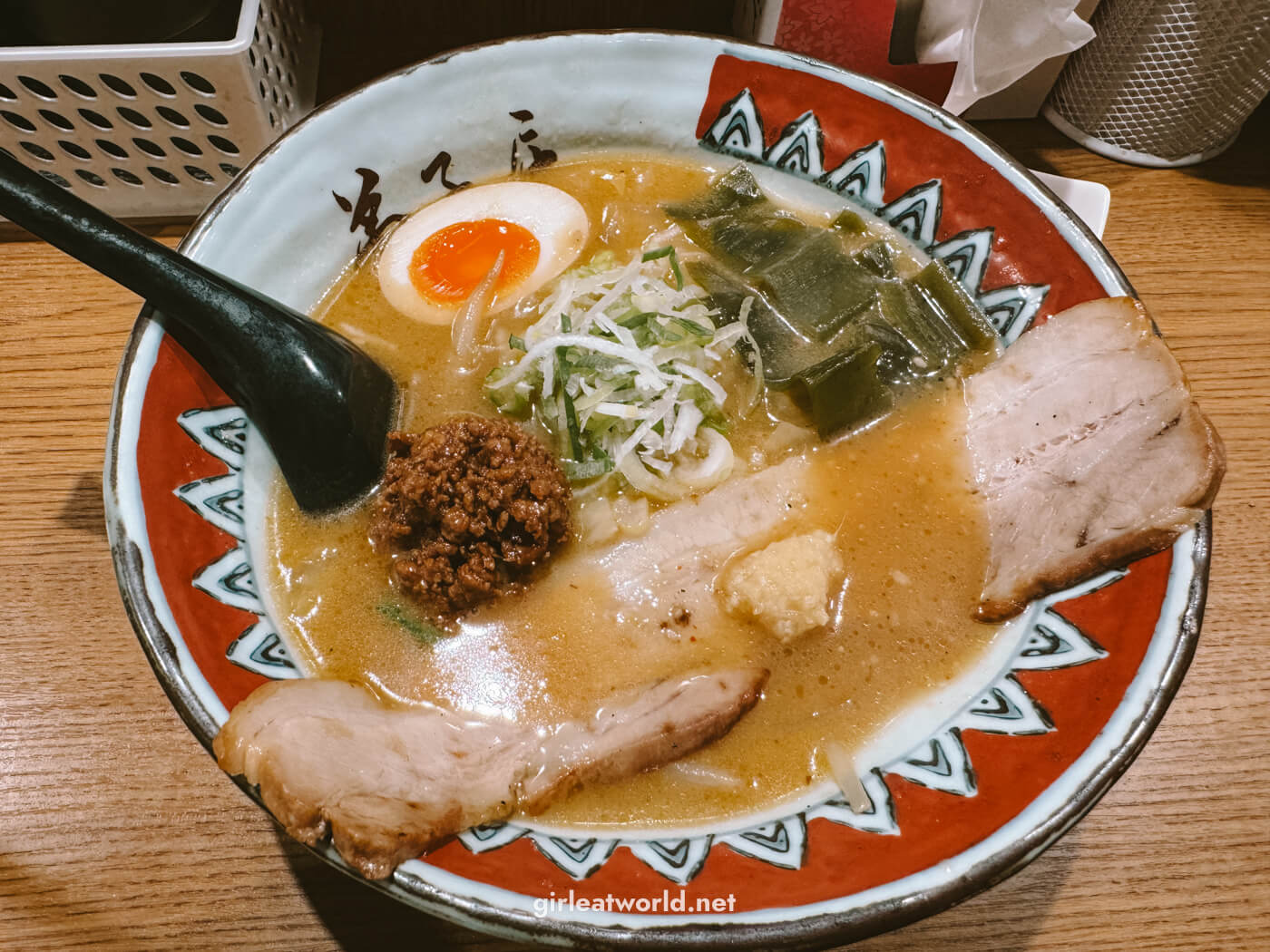
There are also a variety of styles for the noodles: whether it’s straight noodles vs curly noodles, thin vs thick noodles, or yellow vs white noodles. Just like pasta, the styles of noodle creates a different experience and textures for each bowl of ramen.
Lastly, each ramen may have different toppings. The most popular toppings are chasu (pork belly) slices, negi (spring onion), nori (dried seaweed sheets), menma (braised bamboo shoots), narutomaki 🍥 (fish cake with pink swirl design) and ajitsuke tamago (braised runny egg).

The most popular style of ramen that you’ll find in Japan is Tonkotsu ramen, which originated from Hakata in Fukuoka. Usually served with straight thin noodles and creamy tonkotsu broth (pork bone) with toppings like chasu (pork belly), nori (seaweed), and ajitsuke tamago (marinated egg).
But if you ask me, my personal favorite is Shio ramen. I love the clear and realtively lighter broth, which doesn’t leave you feeling heavy even if you finish the entire bowl. I feel it is also the easiest entry into the world of ramen because while the taste is still complex and delicious, it is not overwhelming.

Where to eat Ramen in Tokyo
Tokyo Ramen Tour – If you’re a fan of this comforting dish, definitely consider this Tokyo Ramen Tour. I went on the tour during one of my visits to Tokyo in 2018. Although I’ve had plenty of ramen in my life, I still learned a lot about many other types of ramen from Frank’s tour!
If you decide to go, come with an empty stomach. And I really mean empty stomach, because you’ll be trying many different types of ramen during your visit – up to 6 bowls of tasting-portion ramen. I was so stuffed (but very happy) by the time we were done with the tour.
➡️ Book the Tokyo Ramen Tour here. Trust me, you won’t regret it!
Ichiran – Hakata ramen originated from Fukuoka in the Kyushu region of Japan. While Hakata ramen can be found pretty much everywhere in Japan, what made Ichiran stand out from the rest is the way the dining experience here works – it is completely designed for solo diners.

From start to finish, you rarely need to interact with a human being – Ordering and payment can be done through the vending machine outside right before you fall in line for a spot in the restaurant (and there is always a line). Once it’s your turn, you won’t sit at a regular table, but you’ll sit at a single-occupancy booth instead. Your noodles would then be served through a small window in front of you. Once done, you leave – that’s it! No human interaction is needed.
Zundou-ya in Shinjuku – This is a great spot to try tonkotsu ramen. They are open 24 hours on weekends.
Kisurin – This place is famous for Tantanmen, which is a Japanese take on the famous Chinese dish “dan dan mian”. Unlike other types of ramen, the broth of Tantanmen contains sesame paste, which gives it an extra savory, creamy taste.
Afuri – A different type of ramen than what you might be used to in Japan. The broth is light and clear. It contains Yuzu, a citrus fruit commonly used in Japanese cuisine.
2. Tsukemen (つけ麺)
Tsukemen is a dry dip noodle dish, where the broth is served separately as a dipping “sauce” for the noodles. This dish was allegedly invented in Tokyo in the 1960s, so it is a must-have whenever you’re in Tokyo!
I personally love the richness of the broth. It is usually thicker than the average noodle soup so it clings better onto the noodles on every bite!
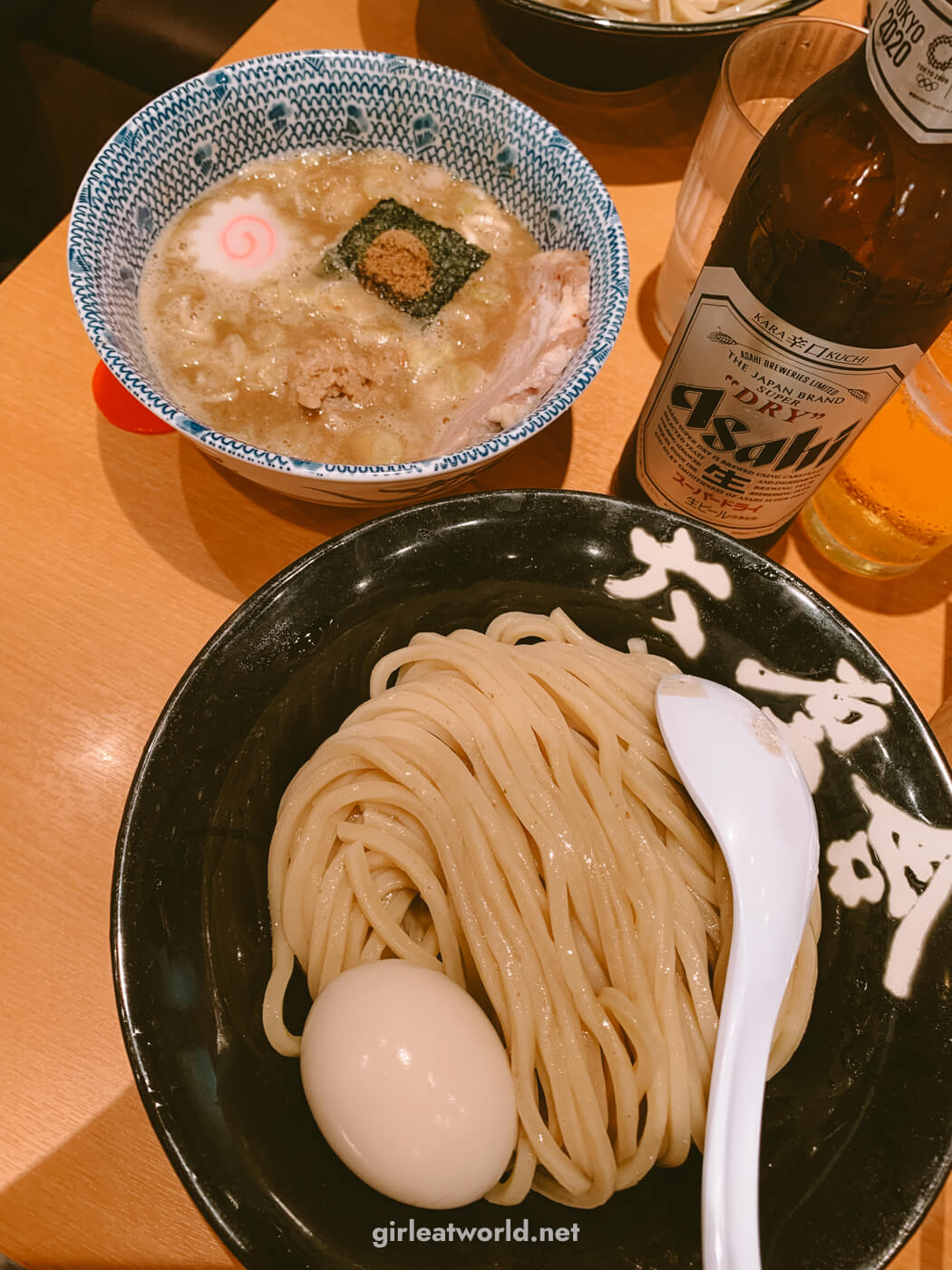
Where to eat Tsukemen in Tokyo
- Rokurinsha in Tokyo Station – made popular recently by Ugly Delicious, Rokurinsha has been a local favorite for over a decade. You can find a long snaking queue for this restaurant at the basement of Tokyo station – expect a 1-hour long queue since the place is quite tiny (seats about 15 people). But, here’s a hack! if you’re flying from Haneda Airport, there is a Rokurinsha in the airport after immigration, and it rarely has any queue. The flavor and authenticity are preserved, so you’ll be eating the same thing as you would in Tokyo station. The downside is you don’t get that uniquely Tokyo vibe. I think it’s a fair trade though!
- Tsukemen Gonokami in Shinjuku
- Fuunji Tsukemen in Shibuya
3. Soba Noodles (そば)
Soba is buckwheat, and is famous in Nagano prefecture as a rice alternative and a way to get some carbs, due to the mountainous terrain where it’s difficult to grow rice successfully. Soba became the main product of Nagano. The most popular form of buckwheat is, of course, Soba noodles!
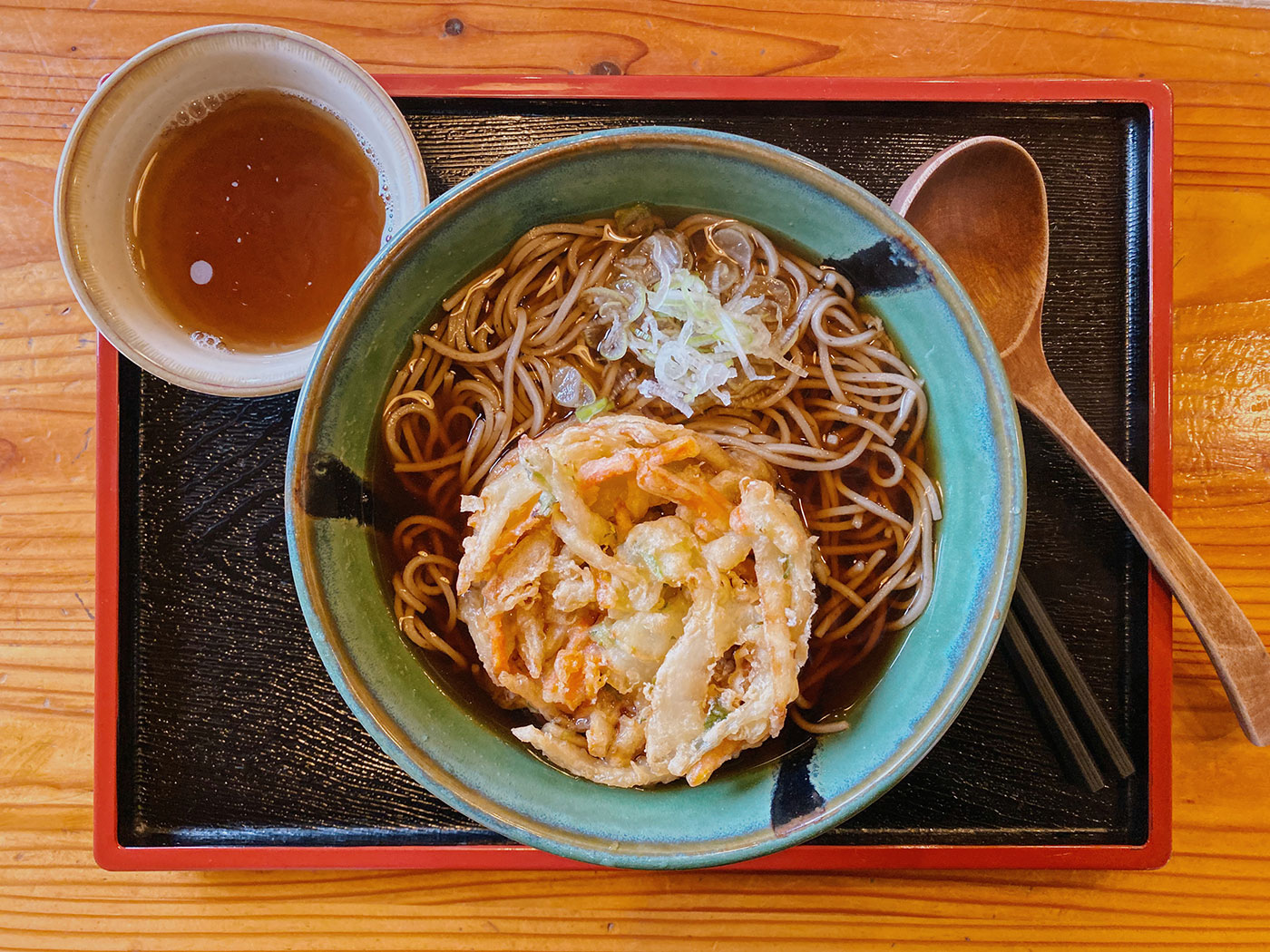
You can have soba pretty much everywhere in Japan, and of course, in Tokyo as well. You’ll find soba commonly served as fast food in Tokyo. When you’re in a business district like Shibuya or Shinjuku, you’ll often see small eating establishments with automated tickets outside, where you can choose how you want your soba.
You can have Soba noodles in a hot soup or served cold with a bowl of broth on the side, and with various toppings. You can then take your ticket inside, and your soba will be served in less than five minutes.
Where to eat Soba in Tokyo
- Miyota in Aoyama
- Kawakamian in Aoyama
- Kanda Yabu Soba near Akihabara Station
- Kanda Matsuya near Akihabara Station
- Ginsei Soba in Aoyama
4. Sushi 🍣 (寿司) and Sashimi (刺身)
Sushi is yet another type of food that’s pretty much synonymous with Japan. It’s usually a piece of raw fish, served on top of a nugget of Japanese rice that has been mixed in vinegar, and might be eaten with light soy sauce and wasabi. There are different types of sushi with the most popular being nigiri, maki, and chirashi.
Sashimi, on the other hand, is raw fish that has been sliced thinly and eaten as-is, without rice. You can then dip the sliced fish in soy sauce and wasabi, depending on what you like!

Even if you don’t like to eat raw fish, you can still enjoy sushi. There are cooked sushi such as Unagi and Anago, which are eels from freshwater and seawater, respectively. Although they are both eels, the texture is very different. Anago is a lot softer and more crumbly than Unagi.

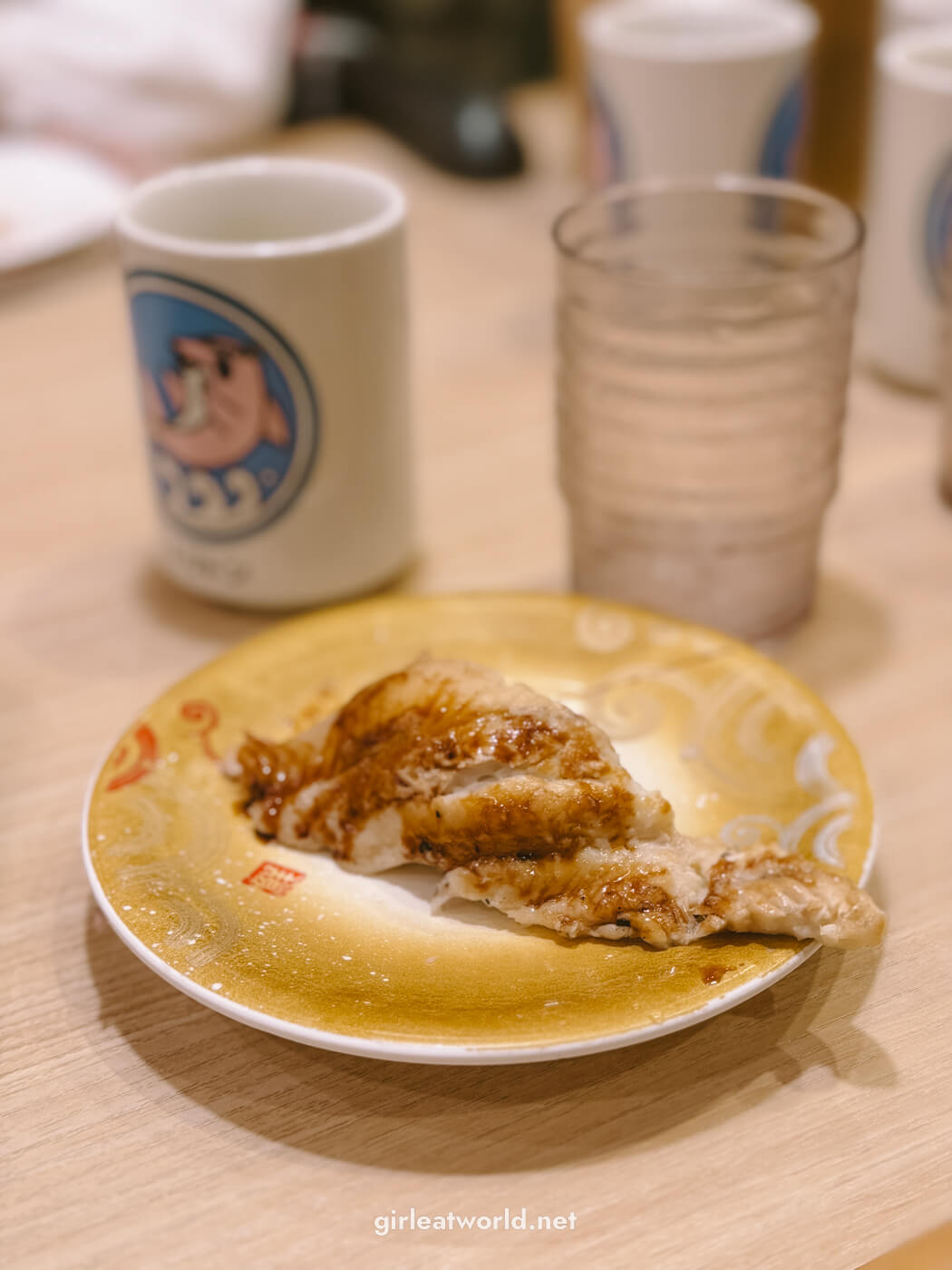
Another type of sushi I enjoy is Sabazushi, a type of sushi made from pickled and salted mackerel. This method of preparation dates back to the olden days before refrigeration technologies were invented, and it was not easy to transport raw fish to areas further away from the fishing ports. Pickling and salting the fish meat is a method of preserving it for a few more days. Although this method is more well-known in Kyoto, nowadays you’ll find sabazushi in Tokyo as well.
Where to eat Sushi in Tokyo
- Magurobito in Ueno-hirokoji
- Tsukiji Outer Market near Higashi-Ginza station – Tsukiji used to be a popular place to have sushi for breakfast, as it was Tokyo’s largest fish market that got the freshest catch early in the morning. While the market has been relocated nearby to Toyosu, there are still plenty of sushi restaurants here. Sushidai is a popular one in this area, but I think any of them is good!
5. Tonkatsu (とんかつ)
Tonkatsu is a breaded and deep-fried pork cutlet. The type of breading used in Japanese cuisine is slightly different than what you might expect. In Japanese cooking, they often use Panko, which is breadcrumbs made from white bread and ground into thin flakes. It results in a more crispier texture than regular breadcrumbs!
Tonkatsu is usually served as a set with miso soup, a side dish of thinly sliced white cabbage salad, hot yellow mustard, and grated radish. There is also usually a side of green tea drink served.

There are two types of Tonkatsu cuts – hire-katsu or rosu-katsu. Rosu is pork loin, served at 100gr and more juicy and fatty than hire. Hire is pork tenderloin – the more lean and expensive cut.
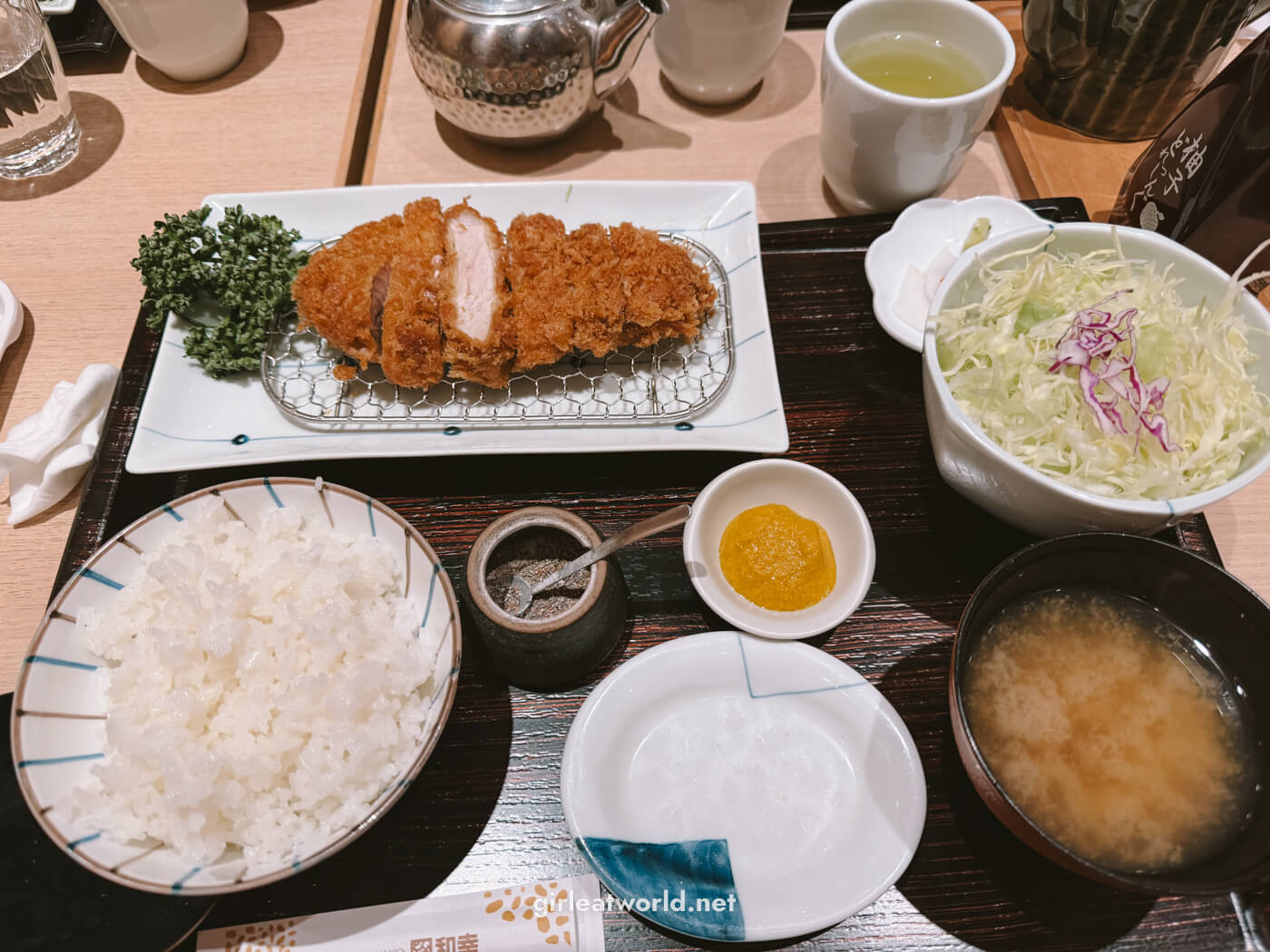
In Tonkatsu restaurants, there is usually an array of sauces you can choose on the side – some are the dressing for the cabbage salad (goma, the japanese sesame dressing, or wafu, the japanese-sytle vinaigrette sauce), some are the sauce for the Tonkatsu itself, and soy sauce.
In some restaurants, the cabbage salad and the rice can be refilled for free. Also, you might have a choice on the miso soup(usually clam or pork-based broth) or the type of tonkatsu sauce (hot or sweet one) that you prefer.
Unlike its cousin Katsudon, Tonkatsu is considered a luxury dish. Many tonkatsu restaurants have received the coveted Bib Gourmand nod from Michelin.
Where to eat Tonkatsu in Tokyo
- Maisen Tonkatsu in Aoyama
- Tonkatsu Masamune in Akasaka
- Wagokoro Tonkatsu Anzu in Ginza
- Keitei Tonkatsu in Ginza
- Imakatsu in Roppongi
- Katsukichi Bodaijyu in Shibuya
6. Gyukatsu (牛かつ)
Gyukatsu is similar to tonkatsu, but instead of pork, it is breaded and deep-fried beef cutlets. It’s less popular than its cousin Tonkatsu, but the preparation and the way it’s served is pretty much the same way – breaded with panko and served with cabbage salad.
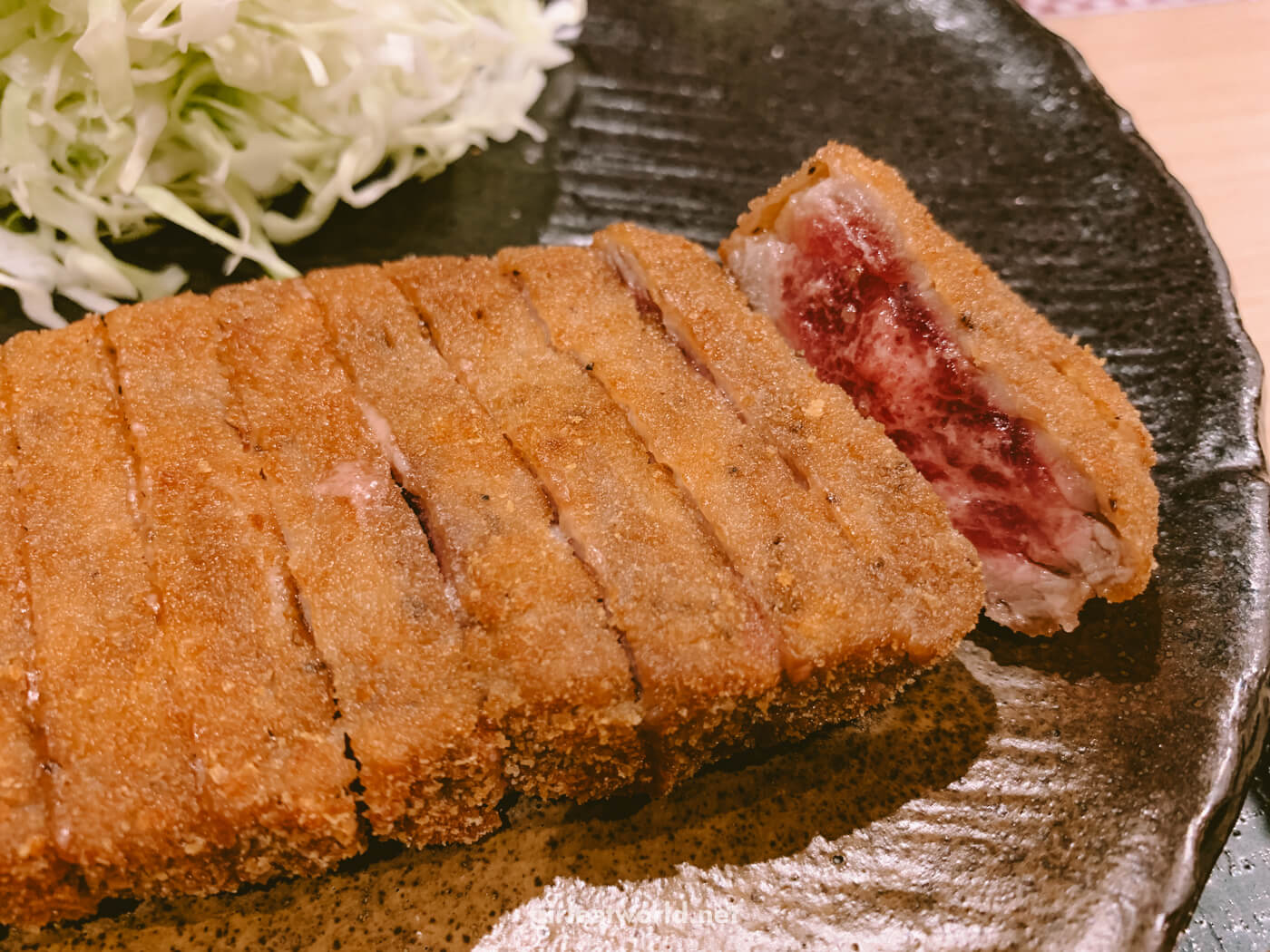
Where to eat Gyukatsu in Tokyo
- Gyukatsu Motomura (Multiple Locations)
- Gyukatsu Kyoto Katsugyu (Multiple locations in Tokyo)
- Asakusa Gyukatsu in Asakusa
7. Oyakodon (親子丼)
“Oya” means parents in Japanese and “ko” means children, so the literal translation of Oyakodon is “parent and children” rice bowl. This refers to the fact that the dish contains both chicken and egg, a rather grim reminder that you’re indeed eating a parent and its potential children in one bowl. But hey, it’s tasty!
Oyakodon is one of my favorite comfort Japanese meals – tender chicken with soft eggs, put over a warm bed of Japanese rice. It’s a classic dish and commonly made at home due to its simplicity.
Where to have Oyakodon in Tokyo
- Kisuke in Akasaka
- Oyakodon Senmonten Marukatsu near Tokyo station
8. Gyudon (牛丼)
Gyudon consists of simple ingredients – thinly sliced beef, simmered with onion, in a broth of dashi, shoyu, and mirin, and served over a warm bed of Japanese rice.
Much like Oyakodon, Gyudon is a comfort meal that can be found everywhere in Japan. And because it is quick and easy to make, it is a common homemade food as well.
Where to eat Gyudon in Tokyo
- Sukiya (Multiple Locations) – Cheap and reliable, this is probably the most popular place to try Gyudon in Japan
- Yoshinoya (Multiple Locations) – This restaurant has been franchised all over Asia and is probably not an unfamiliar name to you anymore, but they’re still a reliable place to find Gyudon
- Kitsuneya in Tsukiji
9. Okonomiyaki (お好み焼き) & Monjayaki (もんじゃ焼き)
Okonomiyaki is a savory Japanese pancake, usually cooked on a teppanyaki (flat iron griddle) right in front of guests and served fresh. I love going to Okonomiyaki restaurants because they usually would have teppanyaki on every table, making it a very interactive experience.
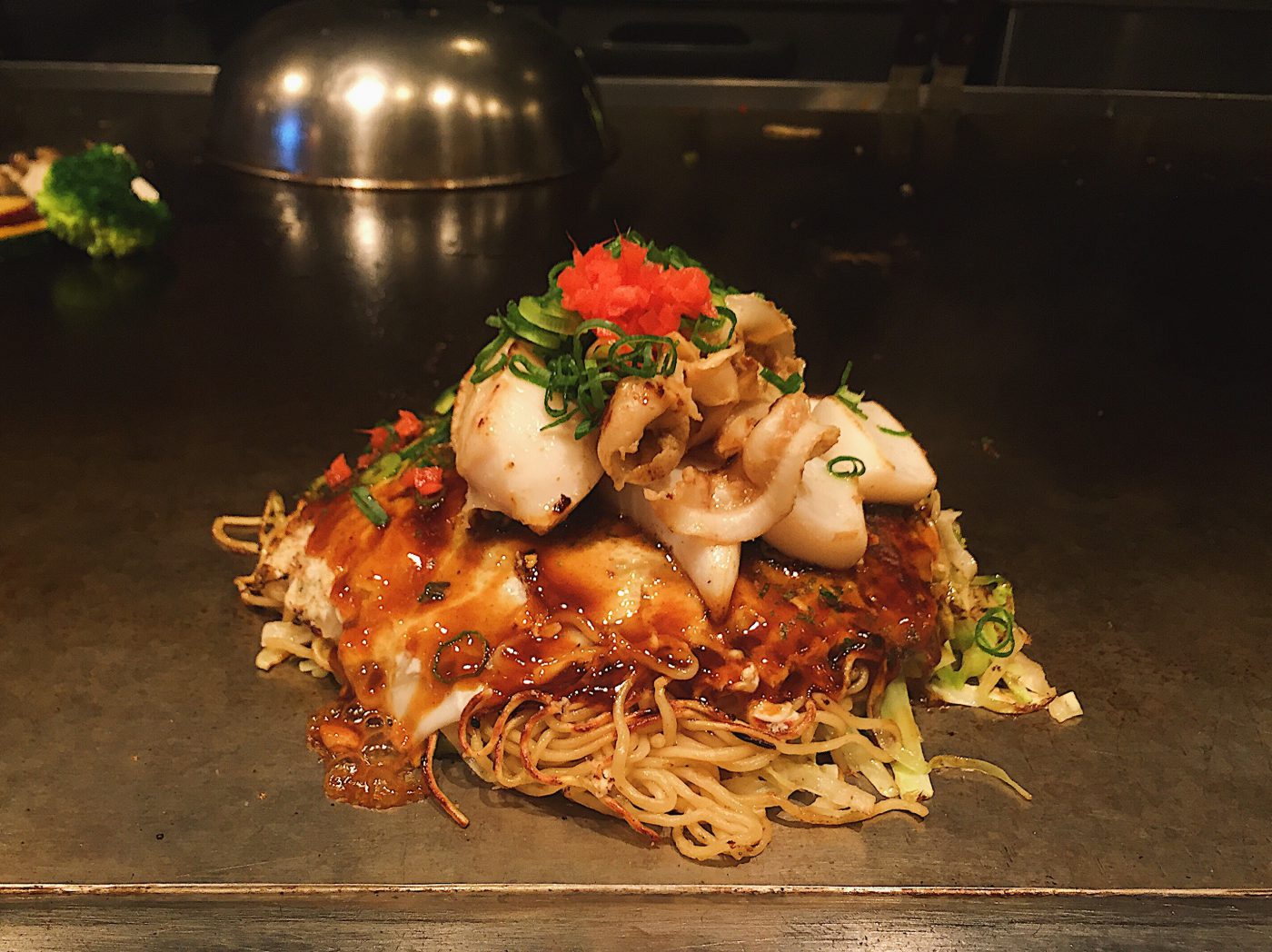
This dish is highly customizable – “okonomi” literally means “to your preference”, because you can choose what goes inside your okonomiyaki.
In Japan, there are two popular Okonomiyaki styles – Kansai style and Hiroshima style. The Kansai style okonomiyaki is more like a pancake, with the ingredients mixed into the batter. Hiroshima-style Okonomiyaki, on the other hand, would have its ingredients cooked in stages. They are both topped with Okonomi sauce and kewpie mayonnaise.
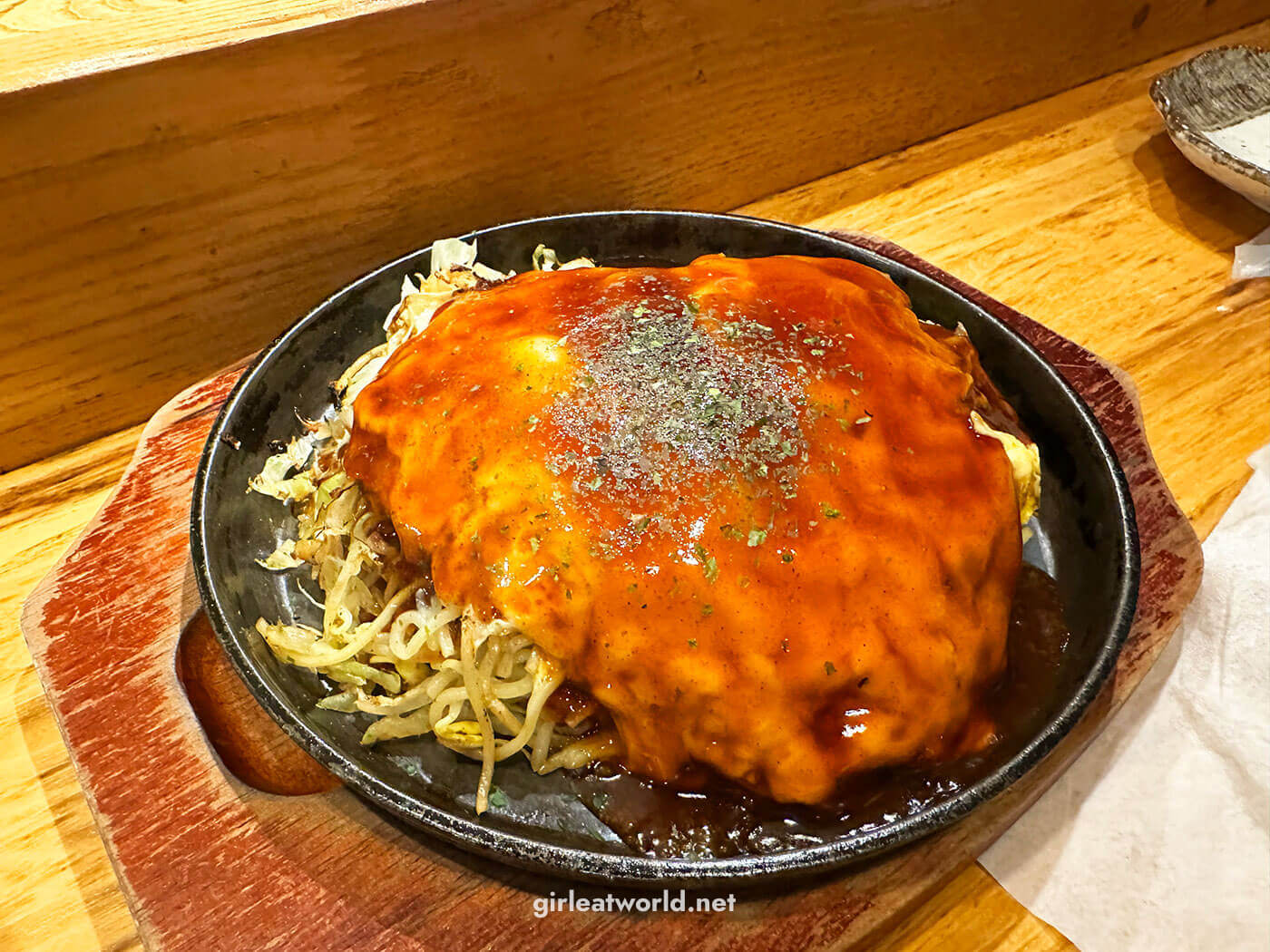
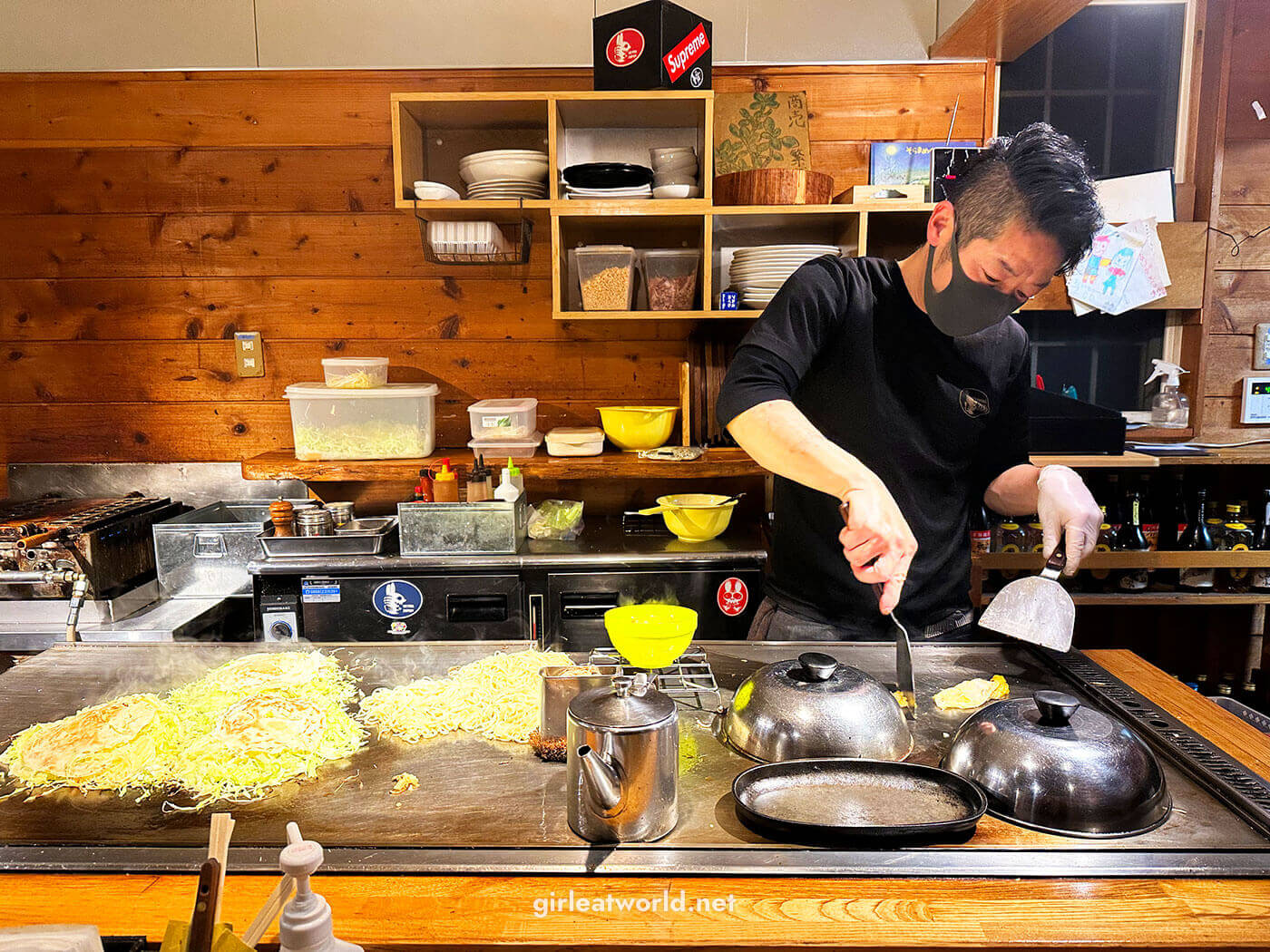
In the Kanto region, there is a similar concept for savory pancakes called Monjayaki. The batter for Monjayaki, often referred to as just Monja, is the same as Okonomiyaki, but with added dashi stock which makes it more runny. I have to warn you: the watery texture of the batter makes Monja look like vomit. But if you can get past the appearance, it’s a delicious vomit…? 😂
Monja is said to have originated from Tokyo, from a place called Tsukishima, a man-made island near the old Tsukiji Fish Market and Ginza area. It used to be served as an affordable snack for children in the late Edo period.
Where to eat Okonomiyaki and Monjayaki in Tokyo
- Hiroki in Shimokitazawa
- Okonomiyaki Kiji near Tokyo Station
- Jun Jun near Honancho Station
- Imari in Ebisu
- Tsukishima Monja Street in Tsukishima
10. Takoyaki (たこ焼き)
Takoyaki is one of the most well-known street snacks in Japan. It’s a ball-shaped snack made from a wheat-flour-based batter with chopped-up juicy octopus tentacles and other ingredients such as ginger and green onion, grilled in a pan with hemispherical holes to help shape it into a ball. Once done, it’s served with Takoyaki sauce and Japanese mayo, then topped with crispy bonito flakes.
PS: While Takoyaki is more of an Osaka thing, but you can find this snack all over Japan these days.
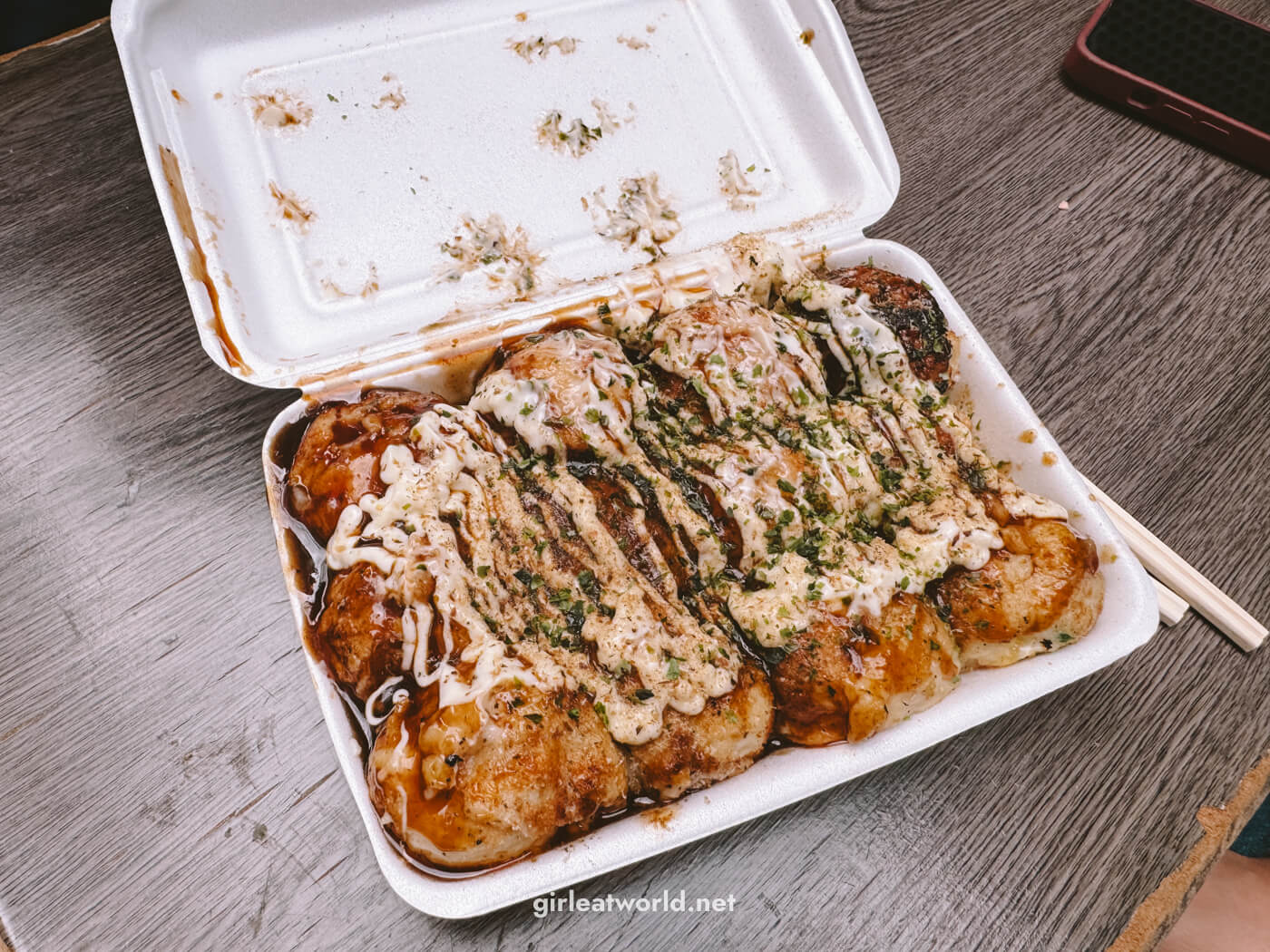
Where to eat Takoyaki in Tokyo
- Gindaco (Multiple Locations)
- Takohachi in Ginza
- Dainkanyama Tempu in Daikanyama
11. Kushiyaki and Yakitori (焼き鳥)
Kushiyaki refers to skewered grilled meat, most popular is chicken, pork and meat. Yakitori specifically refers to skewered grilled meat made from chicken – it could be many parts of the chicken, from meatballs (Tsukune), chicken thighs (Momo), wings, liver, and heart.

Kushiyaki and Yakitori is often associated with izakaya, a small nightlife establishment in Japan that offers alcoholic drinks and skewered meats as casual snacks that are often patronized by Japanese salarymen on Friday nights. It’s associated with fun times of winding down after a long week of hard work!
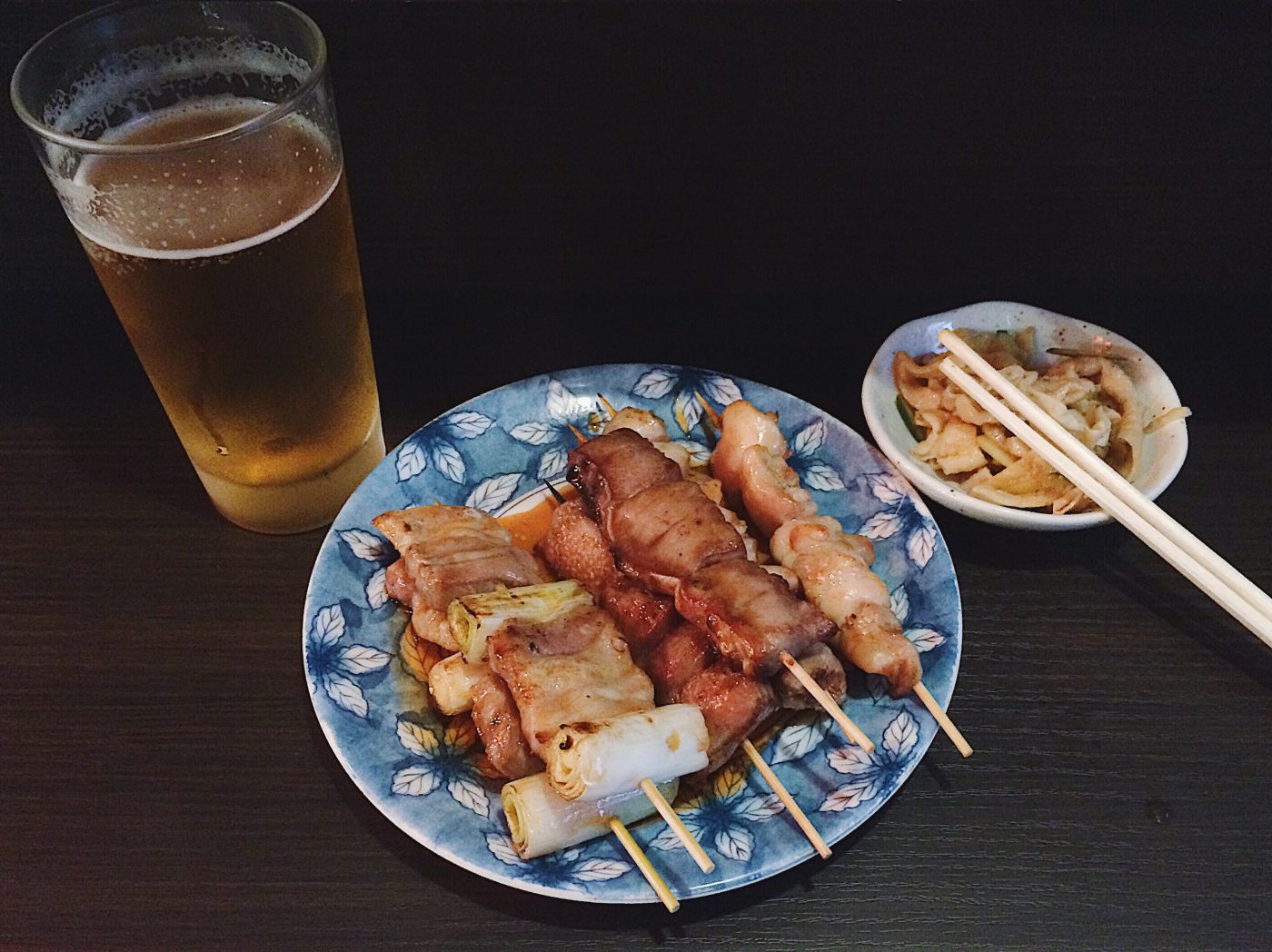
Where to eat Yakitori in Tokyo
- Kushiyaki Bistro Fukumimi in Shibuya
- Kushiyaki Meat Man in Shibuya
- Yakitori Sumire in Shinjuku
- Yakitori Icchan in Shinjuku
- Yakitori Toriyoshi in Nakameguro
12. Kushikatsu (串カツ)
A popular street food originated in Osaka, Kushikatsu is a breaded and skewered vegetable and meat. Similar to tonkatsu and gyukatsu, panko crumbs are used to coat the vegetables before it is deep fried. It is also known as “Kushiage”.
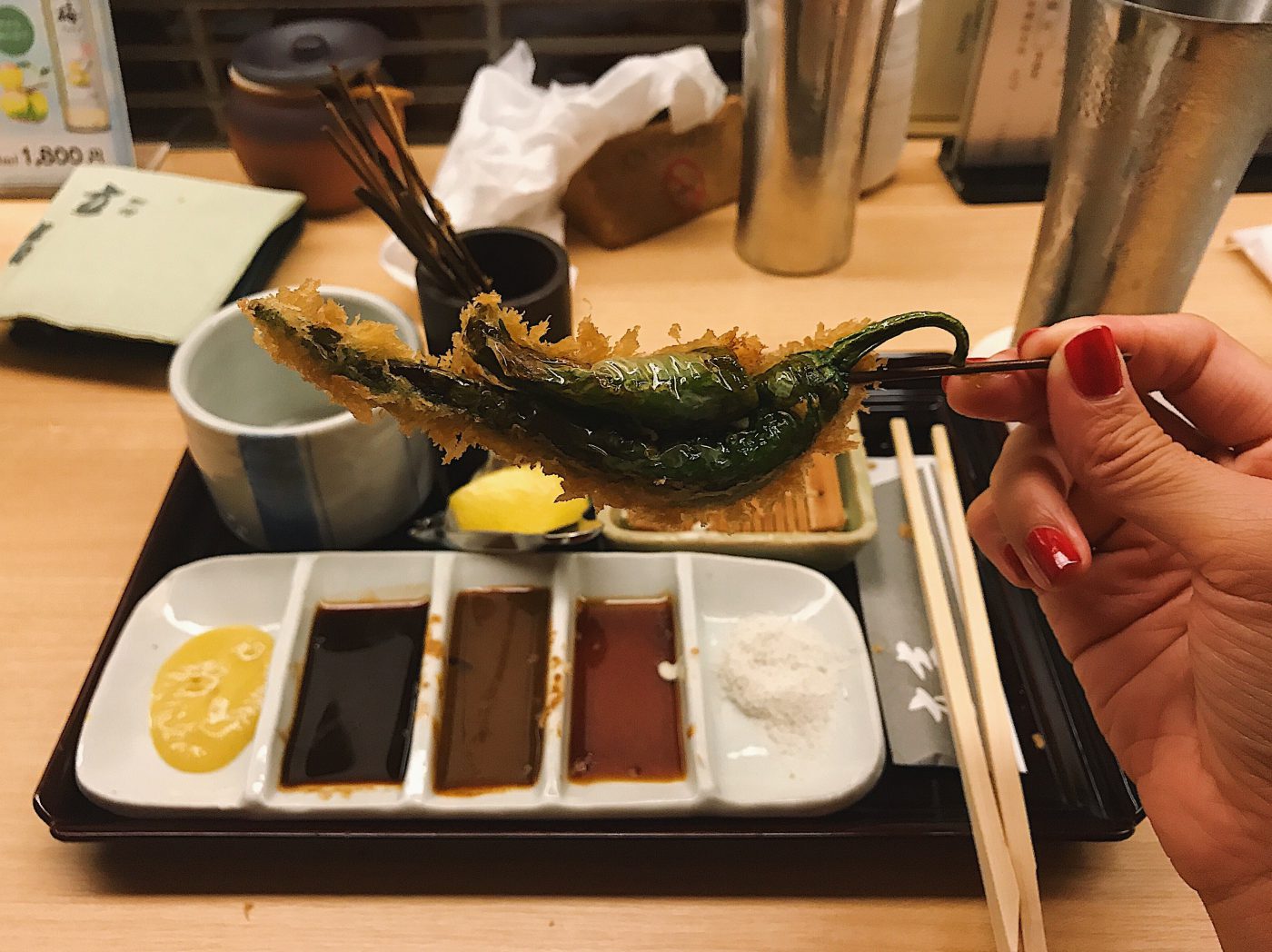
Unlike Kushiyaki which is normally found in informal establishment like an izakaya, usually, Kushikatsu is served in a proper restaurant and in omakase-style, which is multi-course and up to the chef and ingredients of the day. You don’t know what’s coming next, you just sit down and eat until you’re full. You can specify what ingredients you don’t want to have though. For example, I don’t eat shrimp so I always request a replacement.
Where to eat Kushikatsu in Tokyo
- Tatsukichi in Shinjuku
- Kushiageya Namaiki in Shibuya
- Kushikatsu Bon in Ginza
- Ginza Rokukakutei in Ginza
13. Oden 🍲🍢 (おでん)
Oden is a type of nabemono, which is a soup that is served while still being simmered, similar to a hot pot. It often consists of different types and shapes of fishcakes, as well as radish, boiled eggs, and udon, simmered in a light soy and dashi-based broth. It’s the perfect food for cold winter nights.
Where to have Oden in Tokyo
- Oden Ore-no Dashi in Yurakucho
14. Tempura 🍤 (天ぷら)
Tempura is deep-fried fritters made from all kinds of vegetables, and typically protein like shrimp, white fish, or chicken. The batter used for tempura is usually very light, resulting in crispy and non-oily fritters.
My favorite tempura vegetables are Japanese pumpkin (kabocha). It is slightly different than the type of pumpkin you’d find in other parts of the world. Kabocha is smaller, sweeter and more flaky in texture.
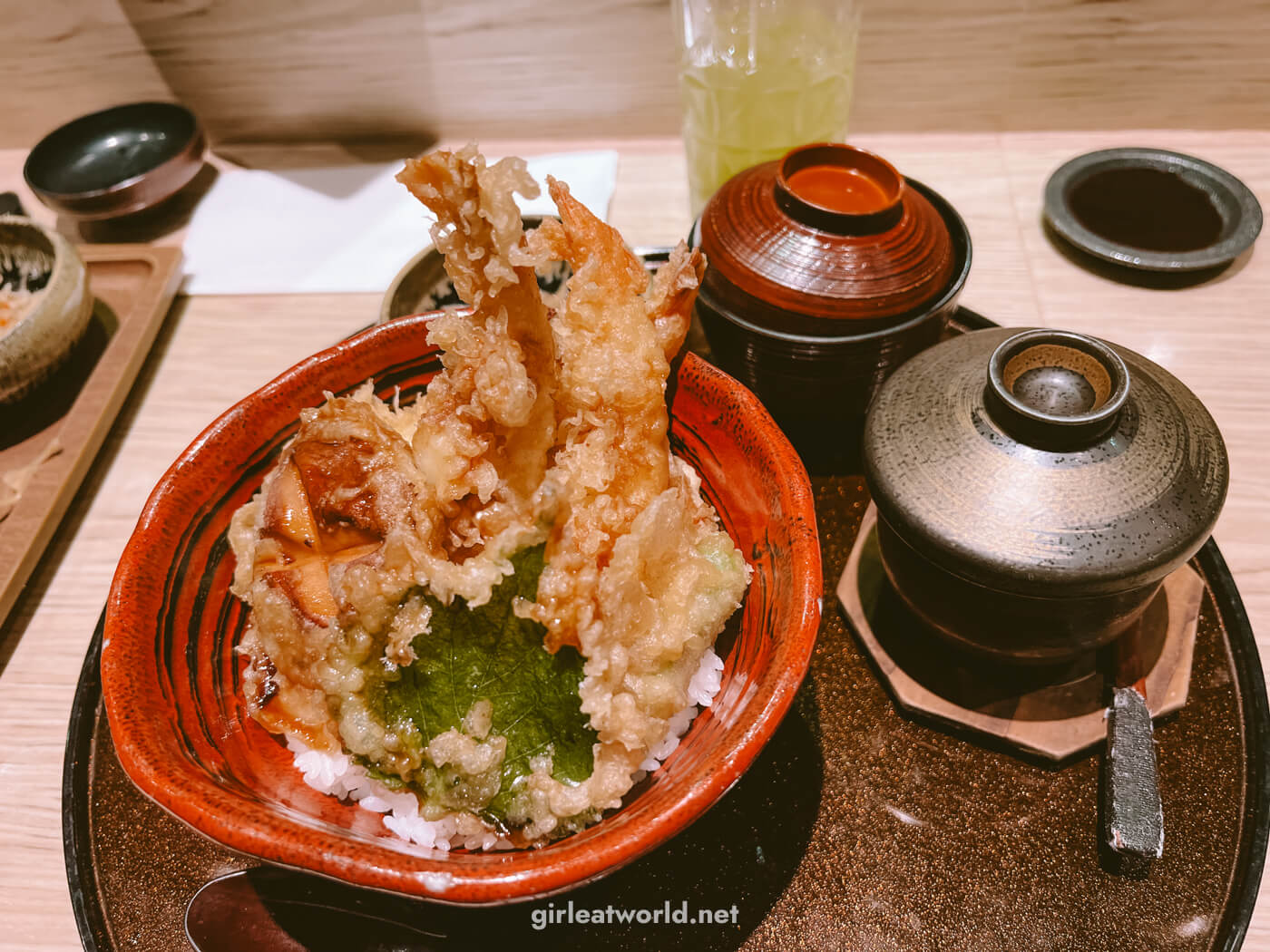
Tempura is often served over rice as Tempura don, or served separately with soba as a set.
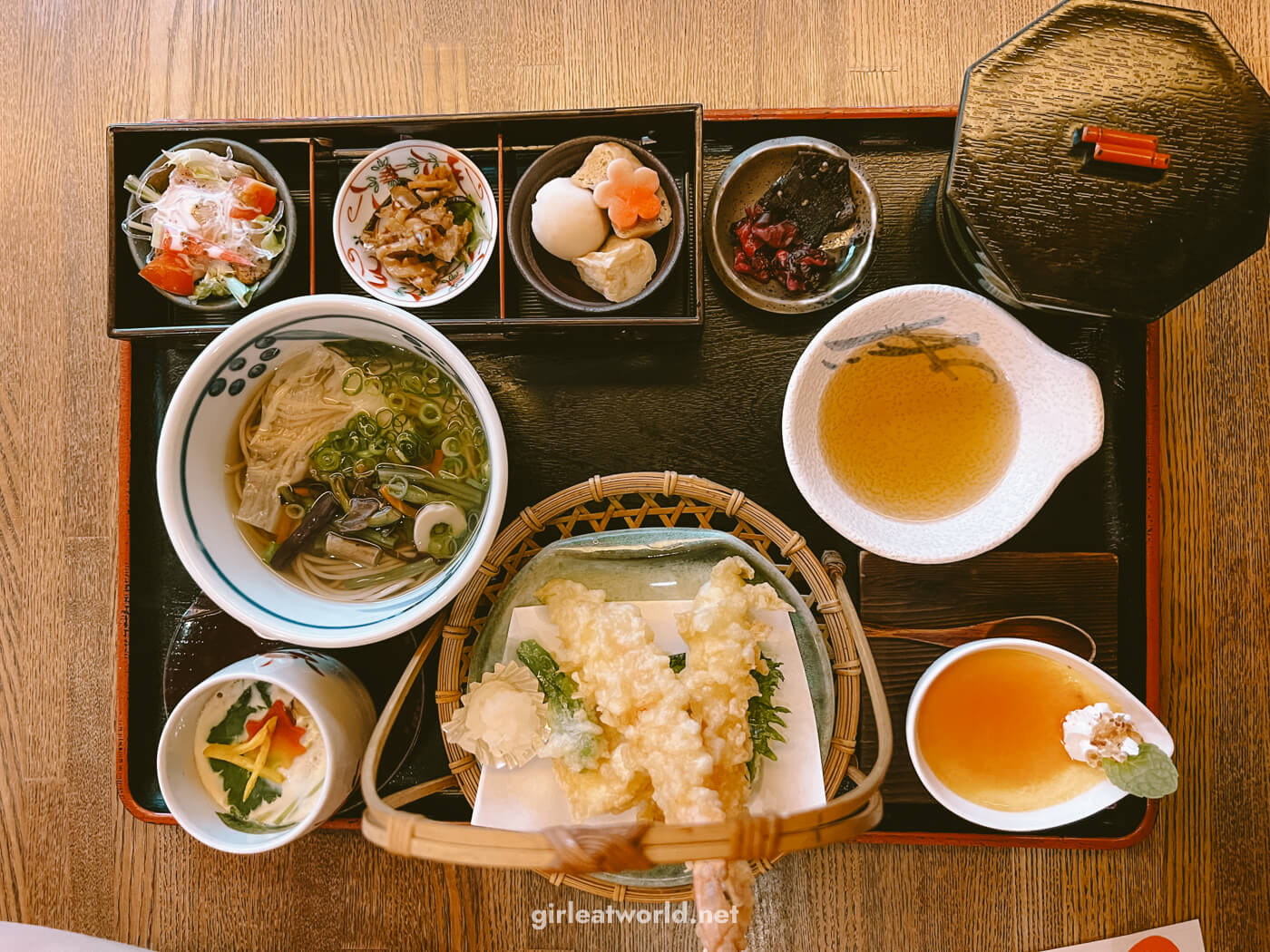
Where to eat Tempura in Tokyo
- Tempuraya Miyakawa in Aoyama
- Tempura Tensho near Gaiemmae Station
- Takiya Tempura near Azabu-juban Station
15. Ochazuke (お茶漬け)
Ochazuke is a breakfast soup made with light broth from green tea and dashi, served over rice and topped with flaked salmon, small cuttings of nori (seaweed), and furikake (Japanese fish-based crispy condiment) for crunch. It is usually used as a way to use up leftover rice.

Where to eat Ochazuke in Tokyo
- Komeraku (Multiple Locations)
- Dashi Chazuke En (Multiple Locations)
- Ochazuke Bar Zuzu in Kabukicho
16. Japanese Curry Rice 🍛 (カレーライス)
In Japanese cuisine, there are plenty of occurrences of “Japanized Western food” aka Yoshoku, where the Japanese have adopted foreign (usually Western) dishes and made them into a unique dish that is entirely their own, often no longer recognizable from the original.
Japanese Curry Rice, or Kareraisu, and Omurice is a popular example of this and has become a staple comfort food for many Japanese households. Unlike the curry we know from Thailand or India, Japanese curry is not nearly as spicy, it’s more sweet than anything.
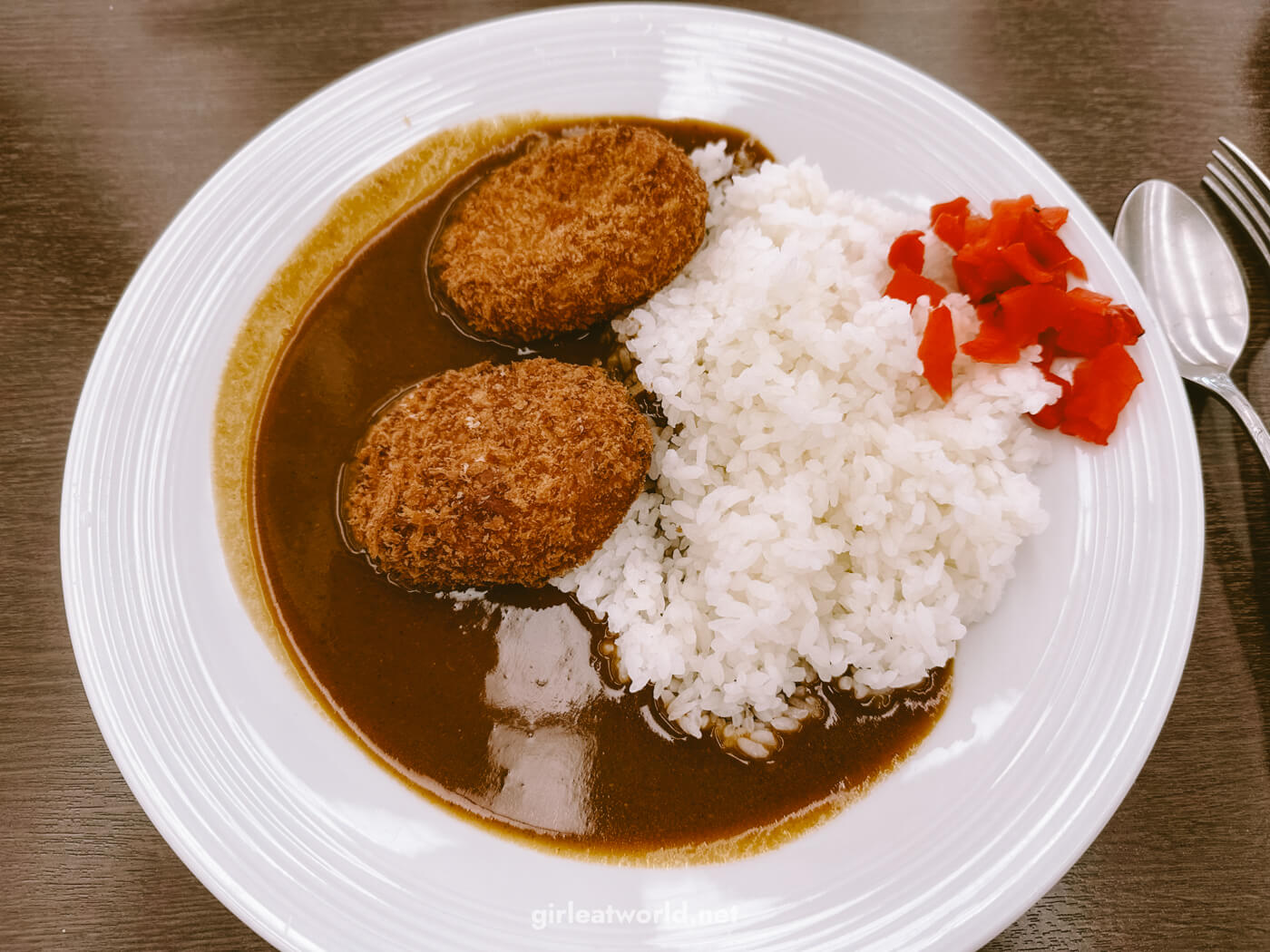
Often served with rice as the name implies, but it’s sometimes on offer with thick udon noodles as well, and some sort of topping like Chicken Katsu, Beef or Potato Croquette.
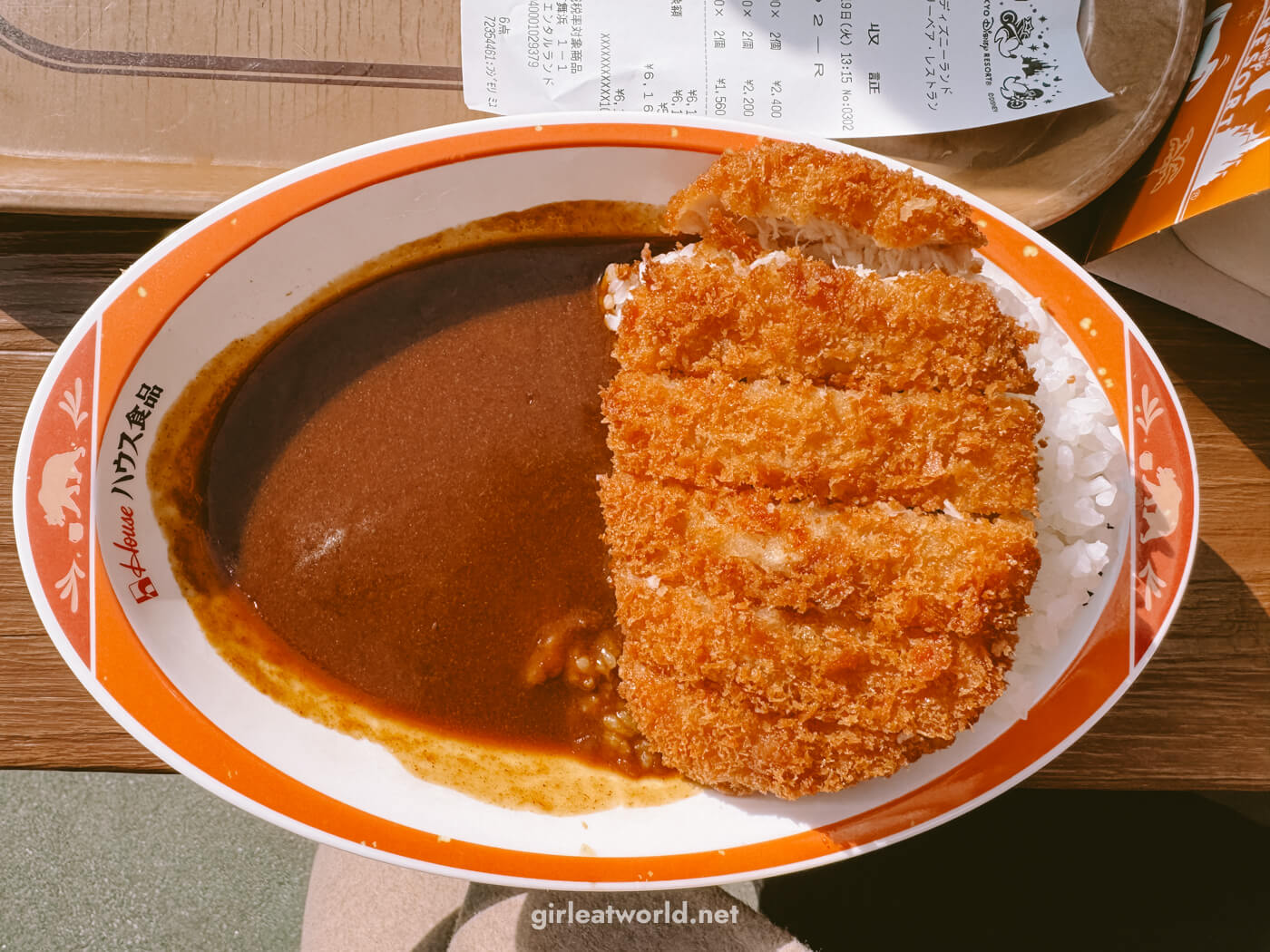
If you’re serious about trying curry while in Japan, head to Jimbocho area. This area is known for curry and you can try a variety of them, not just Japanese curry! But if Japanese curry is what you’re after, visit Bondy – there are multiple branches in Jimbocho.
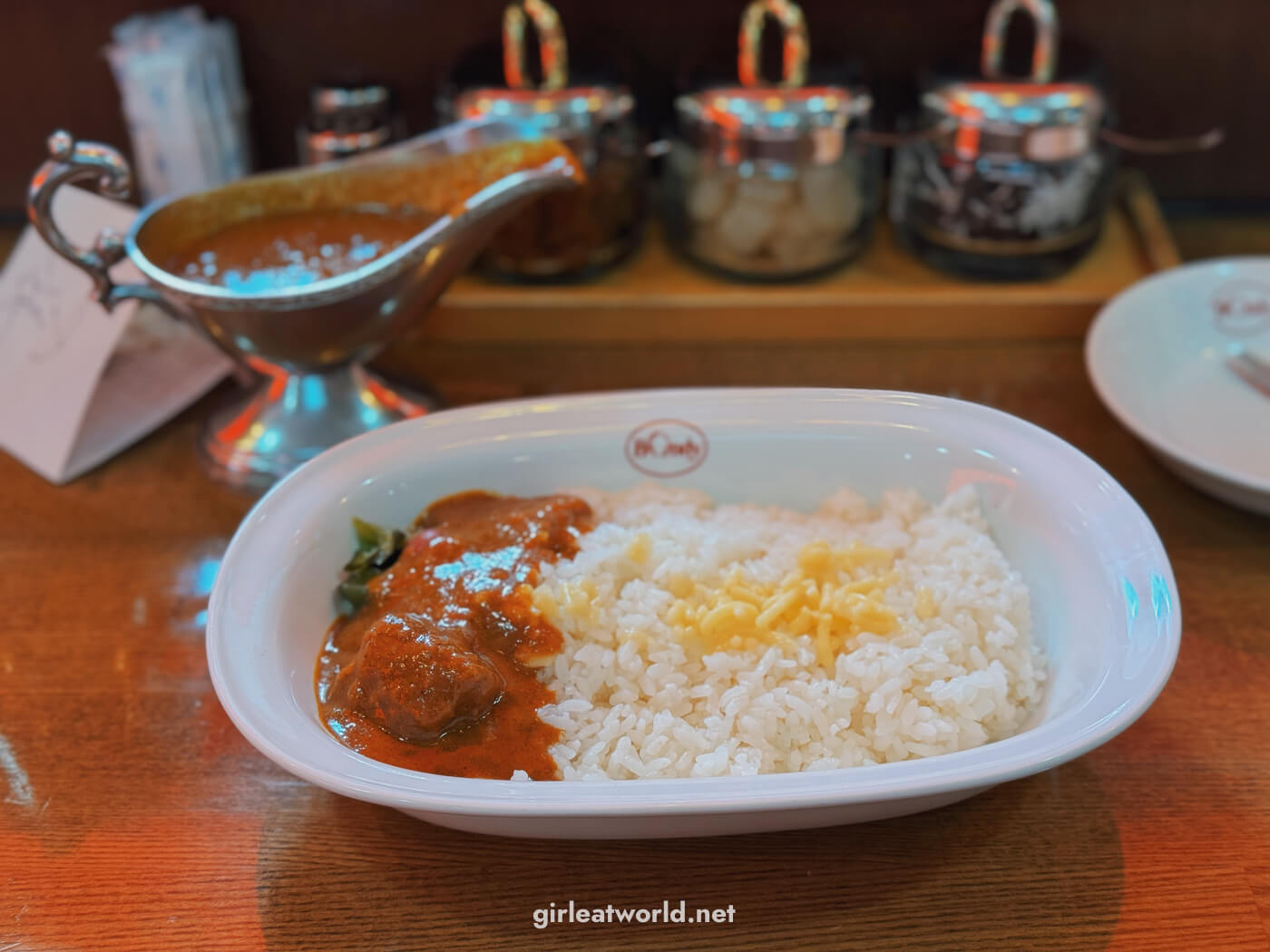
Where to have curry rice in Tokyo
- Bondy in Jimbocho (multiple branches in this area) – Known for chicken curry, but they also have beef and pork as an option. The curry comes with cheese on top by default, and 3 spiciness level – milk, medium and hot. I tried the hottest level and while it burns, it was not too bad for me.
- Gavial in Jimbocho – I heard this is similar to Bondy, but without the queue
- Raisukarē Manten near Jimbocho Station
- Pakupaku Morimori in Shibuya
- Coco Ichibanya – a very popular curry rice chain in Japan. Even though it’s a chain, I still love it!
17. Omurice (オムライス)
Like Kareraisu, Omurice is a type of Yoshoku. Omurice is short for Omelette (Omu) Rice. It can be served in tomato-based sauce, or demi-glace sauce (savory beef sauce). I prefer the latter.

Omurice is usually categorized as a children’s dish. It’s usually a homemade dish made by a mother for their small children – it’s fun to eat and tastes good. But of course, no one is stopping any adults from enjoying Omurice! In fact, Omurice is personally my favorite comfort Japanese dish.
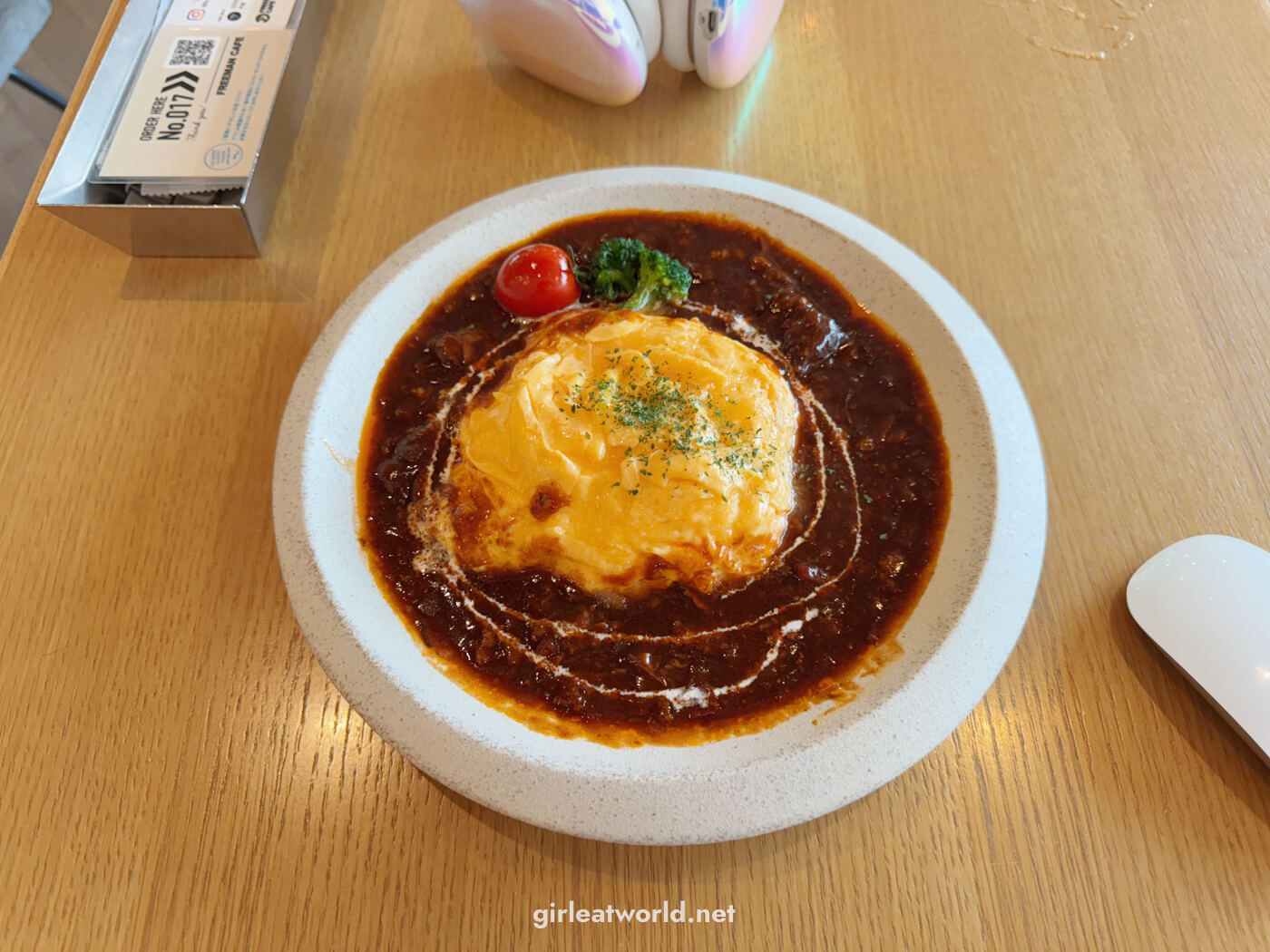
Where to eat Omurice in Tokyo
- Rakeru in Shinjuku
- Kanda Tamagoken in Akihabara
18. Onigiri 🍙 (おにぎり)
Onigiri, also known as Omusubi, is a quick meal that can be grabbed on the go. It’s made from steamed rice with various fillings like roasted salmon, tuna mayo, chicken karaage, and umeboshi (sour plum).
In Japan, you can find Onigiri at any konbini (convenience store). My personal favorite is roasted salmon from Family Mart.
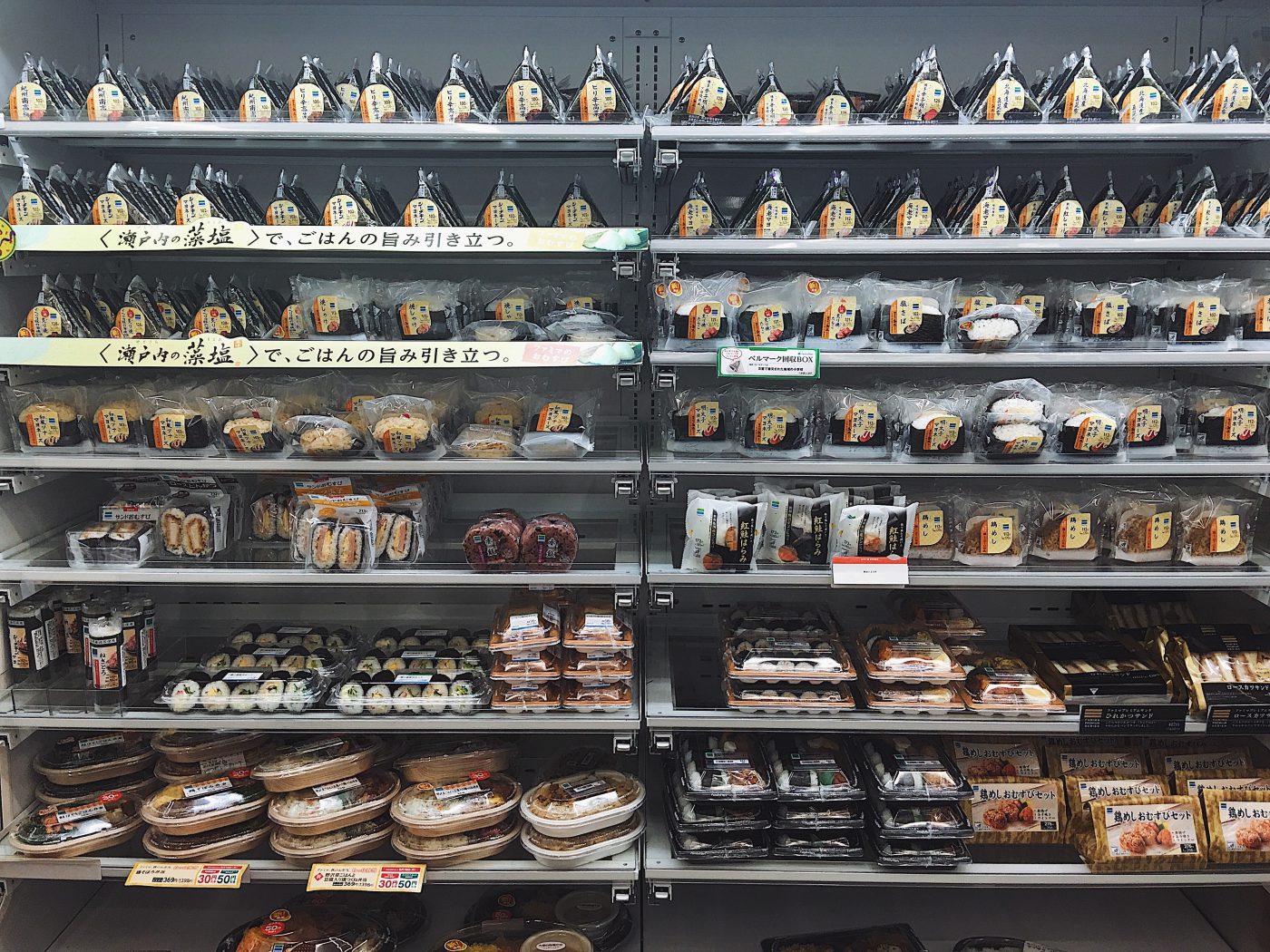
Onigiri is convenient to eat by hand without any utensils needed, so it has become a popular choice for picnics. During Sakura season, you’ll see some homemade onigiri making an appearance at Hanami parties!
Where to eat Onigiri in Tokyo
- Omusubi Gonbei – Many locations around Tokyo. Search for おむすび権米衛 on google maps! The most convenient one for tourist is probably the one in Shibuya station, near exit A8 (Hachiko statue) and the entrance to Tokyu Foodshow at Shibuya Mark City.
- Onigiri Marutoyo in Tsukiji Outer Market
- Onigiri Bongo in Toshima
- Any Konbini – like Lawson’s, 7/11 and Family Mart is also a convenient place to grab onigiri
19. Teishoku
Teishoku refers to a Japanese set meal. Usually, it consists of: a main protein dish (fish, pork or chicken), rice, miso soup, and a few pickled vegetables (tsukemono) as side dish. It’s a delightful way to enjoy a balanced meal.
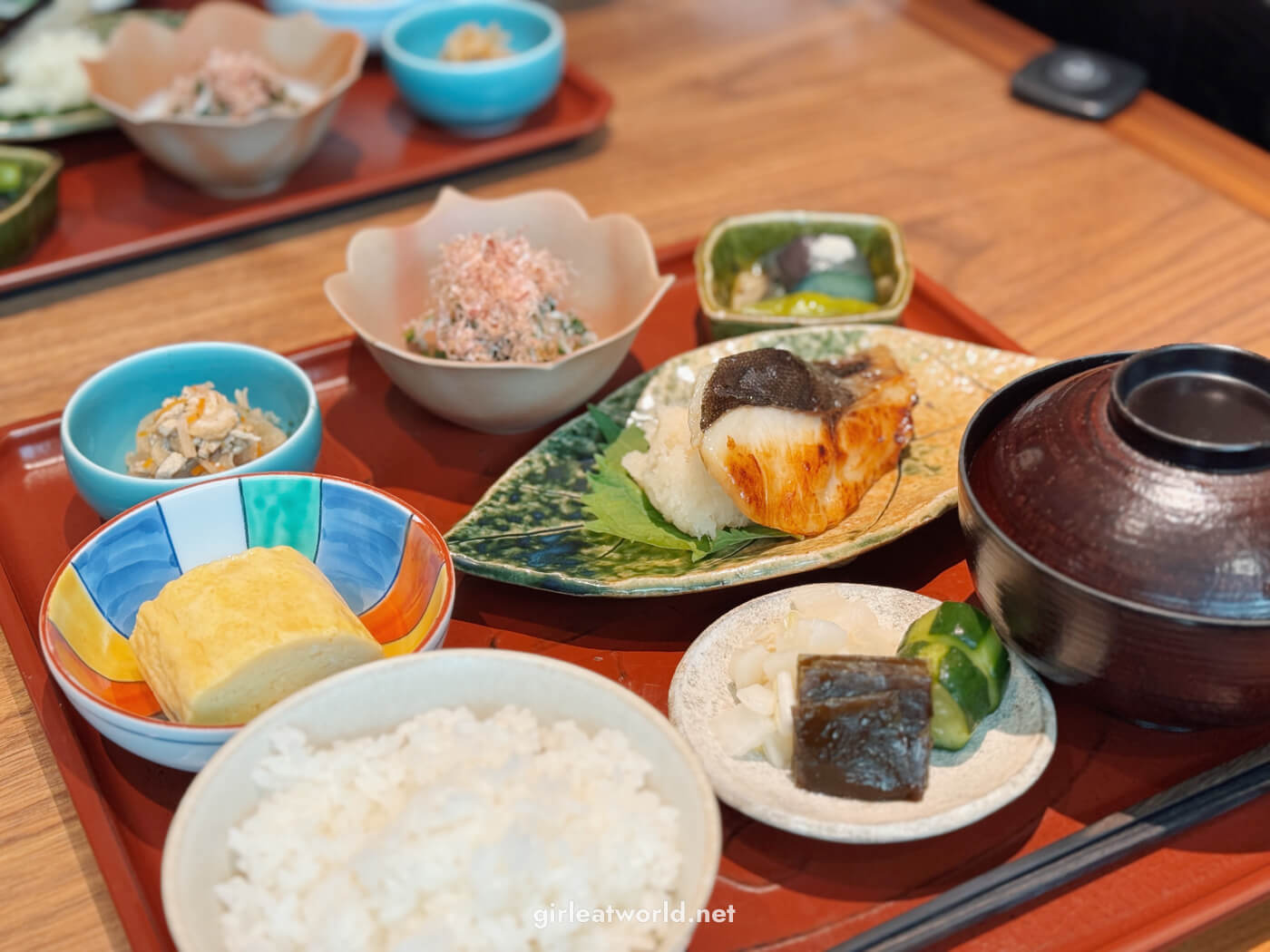
Technically, Tonkatsu is a type of Teishoku as well, but I gave tonkatsu its own section due to the popularity of the dish. However, my favorite teishoku protein is fish – specifically Gindara, a grilled black cod marinated in miso.
Where to have Teishoku in Tokyo
- Kyoto Ichinoden in Roppongi
20. Kaiseki 🍱 (懐石)
When you stay in a ryokan in Japan, it is also a custom to have a Kaiseki – a multi-course traditional Japanese dinner. It is similar to fine dining in Western culture, where you are served lighter dishes in the beginning, leading up to a main and dessert.

Usually, Kaiseki will use seasonal ingredients that are available locally, with an emphasis on manners and respect for the ingredients you are eating. Thus, you’ll have different Kaiseki experiences depending on where and when you are having it.
Where to have Kaiseki in Tokyo
- Chisofufu (ちそう ふふ) in Shinjuku
- Kinari near Gaiemmae Station
21. Dango 🍡 (団子)
Dango is a traditional snack consisting of chewy balls made from rice flour. It is similar to Mochi but with a different texture and different ways of serving.
There are many types of Dango, but the most popular one is Mitarashi dango, which is grilled and served with a sweet soy-based sauce, and Hanami dango, which is colored like the sakura flowers and was traditionally eaten during the Sakura season, though you can find it year round now in Tokyo.
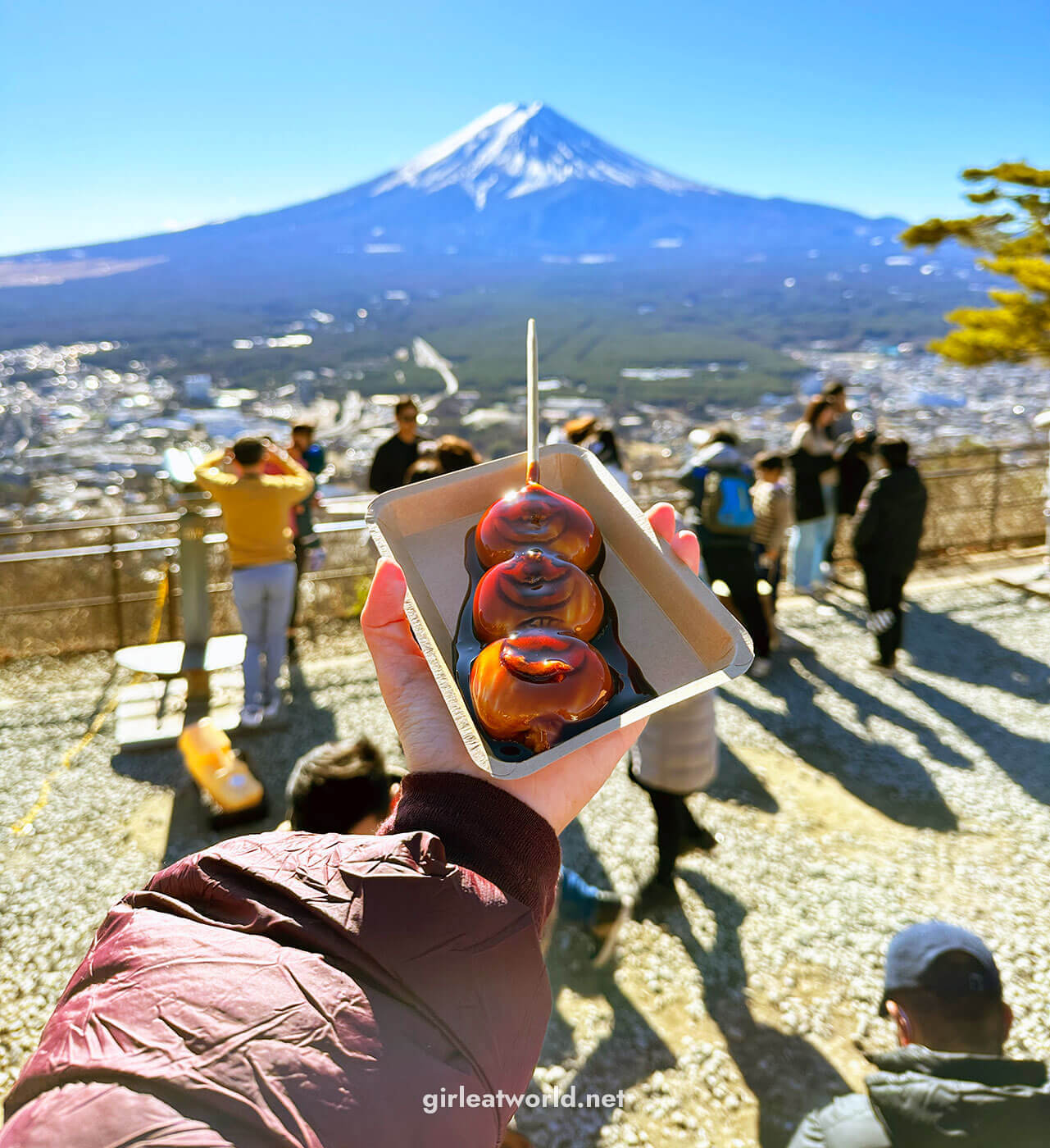
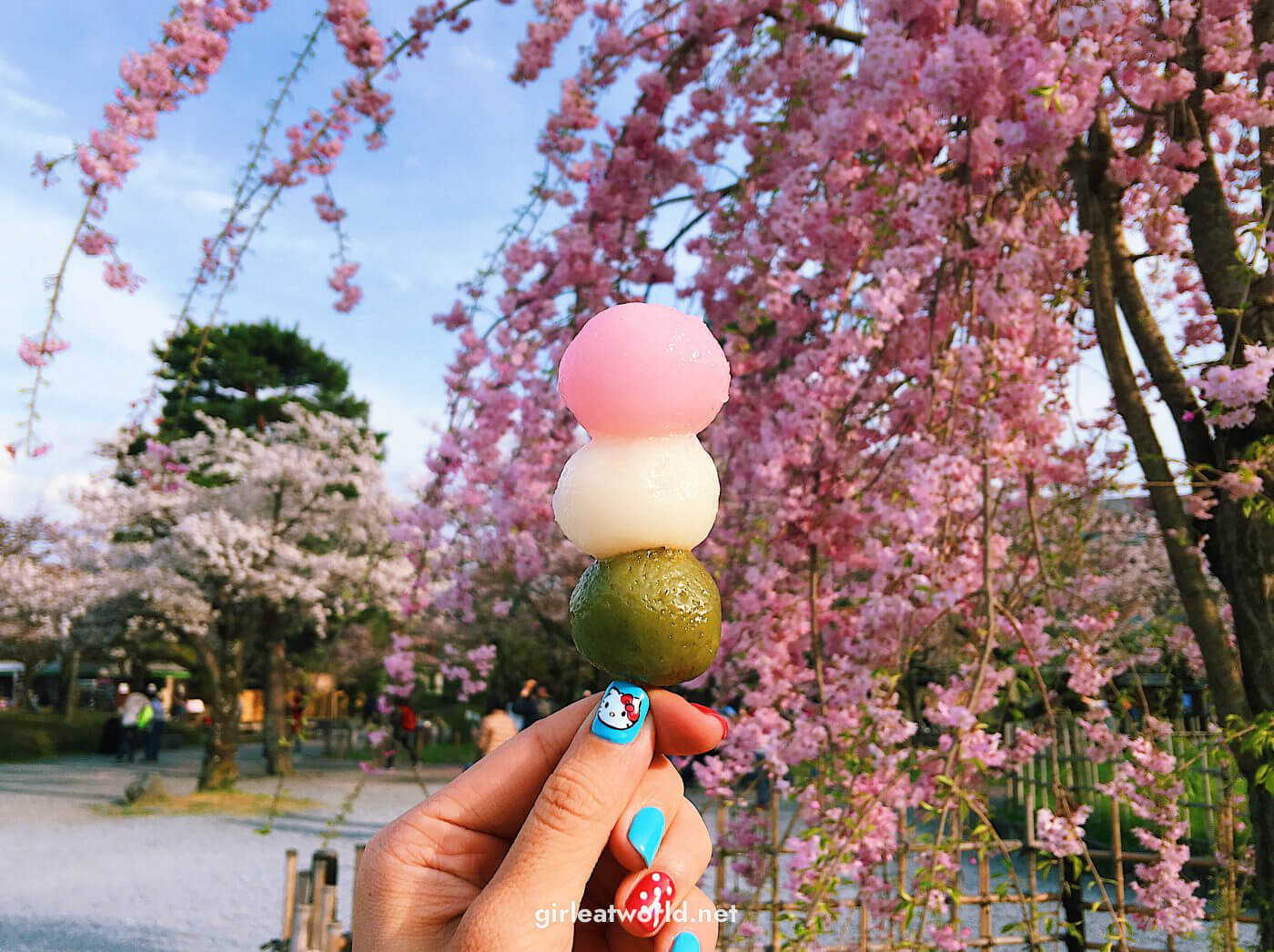
Hanami Dango is a dango variation with pink, white, and green and is traditionally eaten during the Hanami or spring season. And yes, it’s the emoji! 🍡 The pink color comes from either the Sakura flower itself, or azuki (red beans) and the green is from green tea. It is said that the pink, white, and green symbolize the blooming Sakura, the white sky, and the green grass the trees grow on.
Where to have Dango in Tokyo
- Yayoi in Shinjuku
- Bushinami in Shibuya
- Kaede in Asakusa
22. Japanese Hotpot (Nabe) 🍲
Hotpot is well known across east asian culture as a comforting meal to have when the weather is cold or rainy. Hotpot is usually enjoyed as a group, where you sit in front of a large but shallow clay pot containing simmering broth, and you prepare raw ingredients to be cooked in front of you.
Of course, Japan has their own version of hotpot and ways of eating them! Sliced chinese cabbage, spring onion, mushrooms, thinly sliced meats, tofu, konjac noodles – these are the most common ingredients in a Japanese hotpot.
The most common Japanese hotpot is shabu-shabu and sukiyaki. They’re both similar – Shabu-shabu is closer to the typical hotpot experience, using light clear both and dipping sauces. Sukiyaki usually involves a dark sweet and savory broth and dipping the meat in lightly beaten raw eggs. This might sound weird to others, but in Japan, eggs are processed in such ways that it is safe to consume raw.
Where to have Japanese Hotpot in Tokyo
- Nabezo Shibuya Koendori in Shibuya – Close to the Shibuya scramble and easy for tourist to visit since the staff speaks english and there is an instruction in english as well.
23. Matcha
Matcha is a drink made from finely-grounded green tea powder. Although Tokyo is not particularly known for matcha, you’ll find it easily in Tokyo. It is one of the most commonly found ingredients all around Japan. Usually, you can find matcha served as a drink, ice cream and in desserts.
Where to try Matcha in Tokyo
- Gion Tsujiri
- Saryo Tsujiri Daimaru
Tips for Vegetarians and Vegans in Japan
I have to admit, eating in Japan could be challenging for vegetarians. Almost none of the dishes I mentioned above are vegetarian. The Japanese do love their fish and meat!
But it’s not impossible to have an amazing meal in Japan as a vegetarian. As vegetarians, you can be on the lookout for Shojin Ryori which consists of plant-based dishes consumed by Buddhist monks. Typically, you’ll find it in temples in Japan. You can expect all kinds of braised, deep-fried, or pickled vegetables, tofu, miso soup, soy, and rice.
In Tokyo, there are also specific vegetarian restaurants you can visit. I went to Sincere Garden in Aoyama and I thoroughly enjoyed it even as a meat-eater.
If you plan to eat at a non-vegetarian restaurant and hoping to just order the vegetable dishes, I would advise you to be careful of “hidden meat” in Japanese cuisine. Sometimes even if you order what seems like just fried tofu on the menu, it might come with dried fish flakes sprinkled on top. Look out for Katsuobushi – these are bonito fish flakes often found in Japanese cuisine. Sauces and broths might be made using Katsuobushi like Dashi, which is used in a lot of dishes in Japan.
In convenience stores, your best bet would be getting Onigiri (rice balls) filled with Umeboshi (Sour plum) – it is one of my personal favorites. You can also get Shio-musubi, which is a plain rice ball with salt. If it sounds boring – I can assure you it is not. The combination of Japanese rice and salt is one of the purest simple joys one can experience. Other onigiri fillings you can consider that are vegetarian friendly are Kombu (sea kelp), Yukari (Shiso leaves), Inari sushi (rice rolled in tofu skin), or Azuki (red bean).
And that’s all for now! Wow, that was a long list… I truly hope it helped you navigate the amazing world of Japanese cuisine.
➡️ What’s next? If you are visiting Tokyo and need a comprehensive guide, check out my Tokyo Guide and Itinerary post! The post is optimized for first-time visitors, but I’m confident even repeat visitors can learn a thing or two from my post 😉

Hi Melissa, we going to be in Japan mid November….I’m following your Japan blog closely & its fantastic ! The food descriptions are really great & very helpful.
Thanks so much from a couple of first timers..
Chees !
Hi Rumpa, thank you for the kind comment. Have fun in Japan! 😀
What? Seriously? I’ve seen so many weird and wiggly cakes and sweets on YouTube supposedly in Japan. Not one on this list?
Is there a separate list for desserts and sweets? I think my tour group will get very tired of me going into every sweet shop we pass to try the most interesting thing in there.
Hi Melissa! Awesome post. I am visiting Japan in April. What do you think is a must food souvenir from Japan? I saw that Rise is beautifully packed in Japan, Can you give me some recommendation which Rice is the best?
Thanks!
Hi Melissa loving your post, we are going to be in Japan next week, we are in our 70s and so looking forward to it. We live in Scotland, it seems weather in Tokyo is much similar to Scotland so we best wrap up. Can you advised what type of food is available for vegetarians, thank you regards Barbara
Hey Barbara, it is a little challenging for vegetarians as Japanese love their fish, but it’s not impossible. You can try Shojin ryori which is temple cuisine in Japan and usually consumed by Buddhist monks. It is vegan. In Tokyo, there are also specific vegetarian restaurants you can visit. I went to Sincere Garden in Aoyama and I enjoyed it even as a meat eater! You can expect all kinda of braised or pickled vegetables, tofu, miso soup, and rice.
If you plan to eat at non-vegetarian restaurant, I would advise to be careful of “hidden meat” in Japanese cuisine – sometimes even if you get fried tofu, dried fish flakes might be sprinkled on top. Look out for Katsuobushi – these are dried fish flakes often found in Japanese cuisine. Or, sauces might be made using fish essence (like Dashi).
In convenient stores, your best bet would be getting the rice balls that are filled with sour plum (Ume) – those are actually one of my personal favorites!
I hope you enjoy your trip!
PS: you have inspired me to add a section for vegetarians 🙂